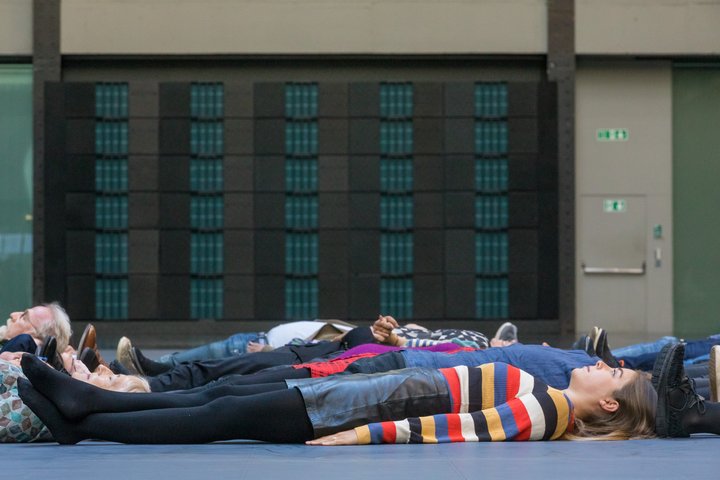CAA News Today
Meet the 2021 Professional Development Fellows
posted by CAA — Feb 18, 2022
CAA is pleased to announce the recipients of the 2021 Professional Development Fellowships. The recipient of the $10,000 fellowship in visual arts is Christine Lee, California Institute of the Arts and the recipient of the $10,000 fellowship in art history is Jenny Tang, Yale University. An honorable mention in visual arts goes to Malene Barnett, Temple University and an honorable mention in art history goes to Maia Nichols, University of California, San Diego. All fellows and honorable mentions receive a complimentary one-year CAA membership and registration for the 2022 Annual Conference.
2021 PROFESSIONAL DEVELOPMENT FELLOWSHIP IN VISUAL ARTS
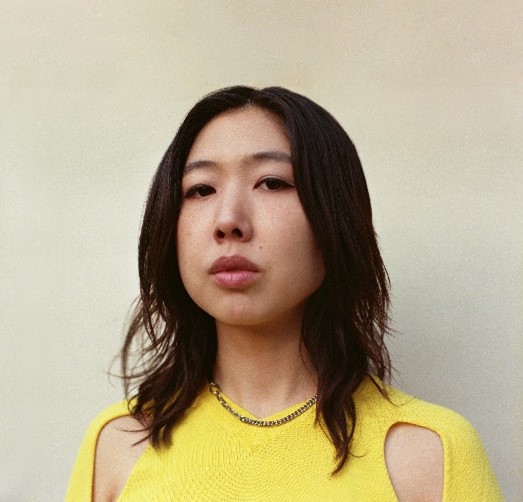
Christine Lee, California Institute of the Arts
Christine Yerie Lee is a visual artist primarily working in video, installation and sculpture. Raised in the American South by immigrant parents from South Korea, her practice explores performativity and identity-formation, often using the body to articulate ideas concerning resistance to hegemonic power structures in hopes to create a future yet to be imagined or narrativized. By engaging with folklore, history, and pop culture, her work addresses personal and collective memory, hybridity, and authenticity. Her material explorations reflect the poetics informed by these notions and are often activated in her digital works. Through intersectional inquiry and worldbuilding, she aims to illuminate the distinct and parallel threads of the human experience to provide pathways for connection. Lee received a BFA in Apparel Design from Rhode Island School of Design in 2010 and worked as a fashion designer for a decade prior to graduate school. She currently resides in Los Angeles and will complete her MFA in Art at California Institute of the Arts in May 2021.
HONORABLE MENTION IN VISUAL ARTS
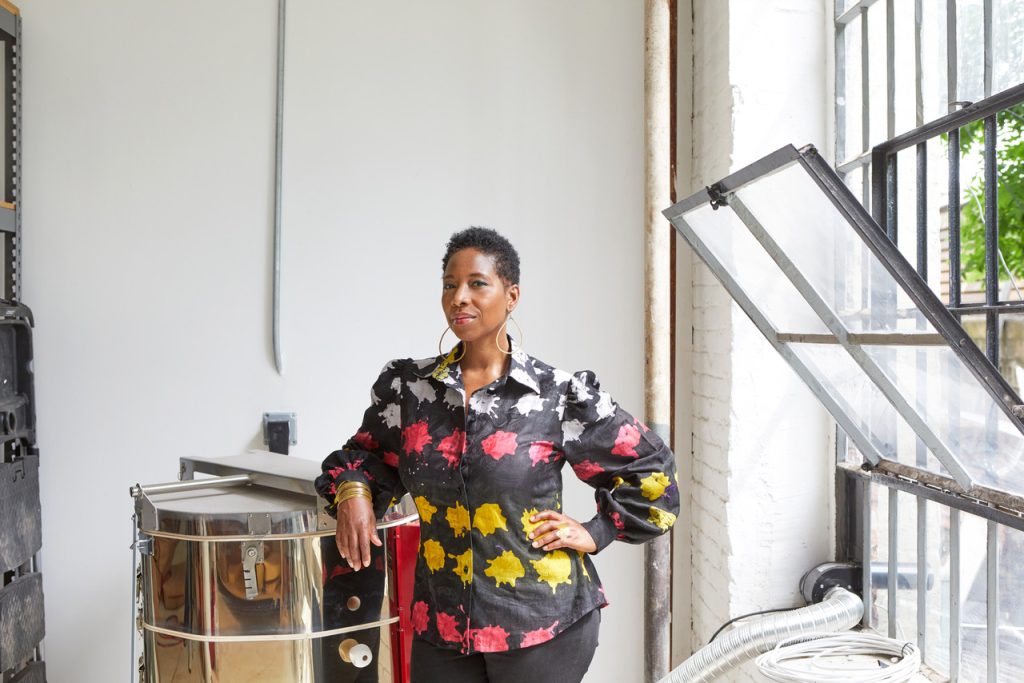
Malene Barnett, Temple University
Malene Barnett is a multi-disciplinary artist, entrepreneur, and authority on the cultural traditions and practices of art in the African diaspora and how it translates into her vision of the modern black experience. From her sculptural ceramic tiles and vessels to mixed media paintings to handwoven rugs, Barnett continues to evolve her craft and share her African heritage with a global audience. Using archival materials like glass, fiber and clay, she uncovers a deeper language of her legacy and an authentic understanding of her cultural identity. A passionate connector and expert ambassador, her mission is to use art as a tool to create community impact and open doors for the next generation of black artists and expand the conversation around marginalization in the arts and create greater opportunities for inclusion.
As the founder of the Black Artists + Designers Guild, a global platform and curated collective of independent black makers, she constantly seeks new ways to define the Black narrative and experience for a new generation while bringing awareness to inequality. Her work has been praised in Interior Design Magazine, New York Magazine, Traditional Home, Elle Decor, HGTV Magazine, Luxe + Design Magazine, and House Beautiful. She was also on the cover of Brownstoner Magazine and Wendy Goodman’s Designer Lives video series with New York Magazine’s The Cut. Her entrepreneurial spirit was captured in the NY Times bestselling book “In the Company of Women ” and Home by Hygge & West. She has appeared as a guest speaker on Morning Joe, MSNBC Your Business, and TEDx. Malene’s works have been exhibited at Museum of Science and Industry, Dallas African American Museum, Jane Hartsook Gallery, Mindy Solomon Gallery, Baltimore Clayworks, DAAP Galleries, and The Clay Studio.
2021 PROFESSIONAL DEVELOPMENT FELLOWSHIP IN ART HISTORY
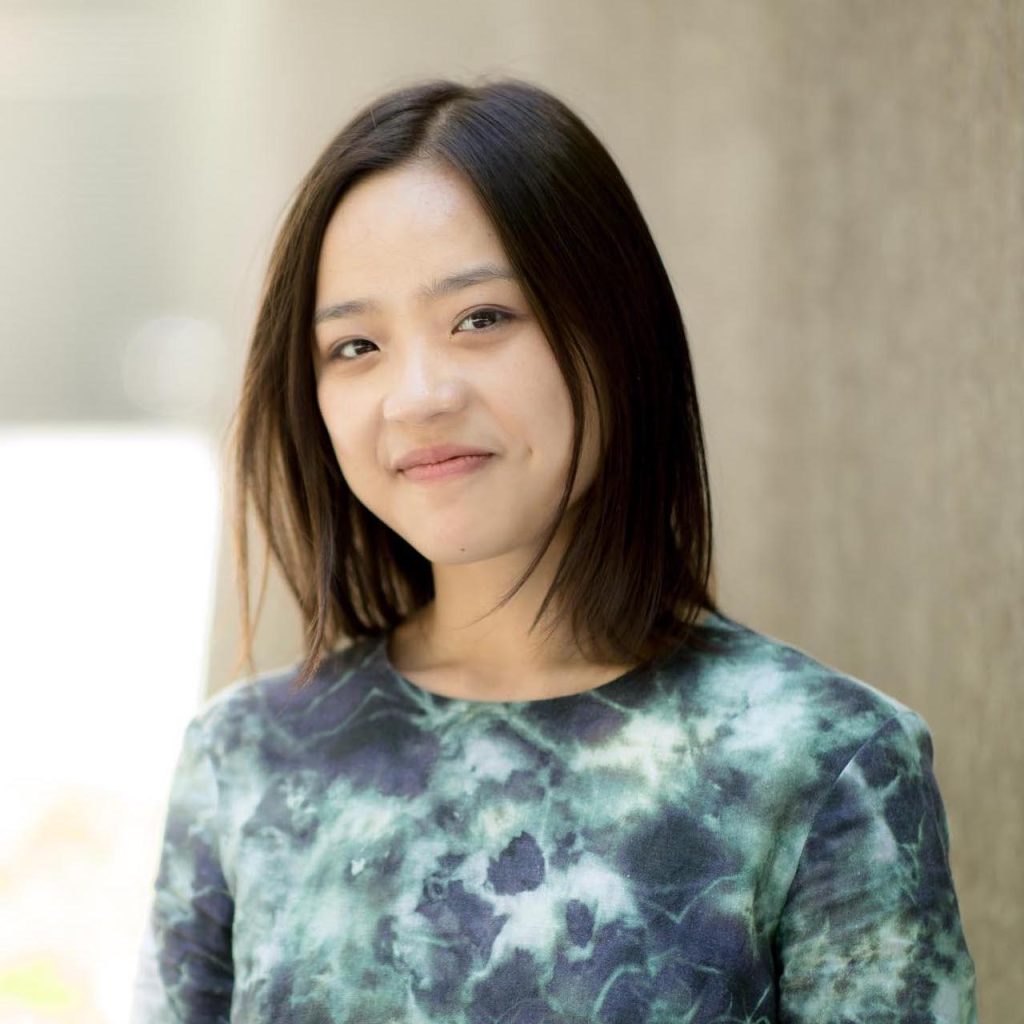
Jenny Tang is a doctoral candidate in History of Art and Film & Media Studies at Yale University, where she specializes in modern and contemporary art, media, and visual culture of the Atlantic world. Tang’s dissertation combines original archival research and a feminist postcolonial perspective to show how layered twentieth-century regimes of race and citizenship in the United States shaped modernist imaginations of the body across the Atlantic. From photomontage and abstraction to security and confinement, this work recasts the history of modernism through the lens of Asian American and African American racial formation. In addition to her scholarly practice, Tang writes criticism on the cultural politics of art, film, and music. She has also contributed to exhibitions and programs at the Studio Museum in Harlem and the Museum of Modern Art, where she was a 2020-21 Mellon-Marron Research Fellow in the Department of Painting and Sculpture. At Yale, she co-organized the group exhibition New Genealogies with photographer John Edmonds at the Yale School of Art. Tang currently teaches foundational topics in art history in the Department of Art History and the Rose Hill Honors Program at Fordham University.
HONORABLE MENTION IN ART HISTORY
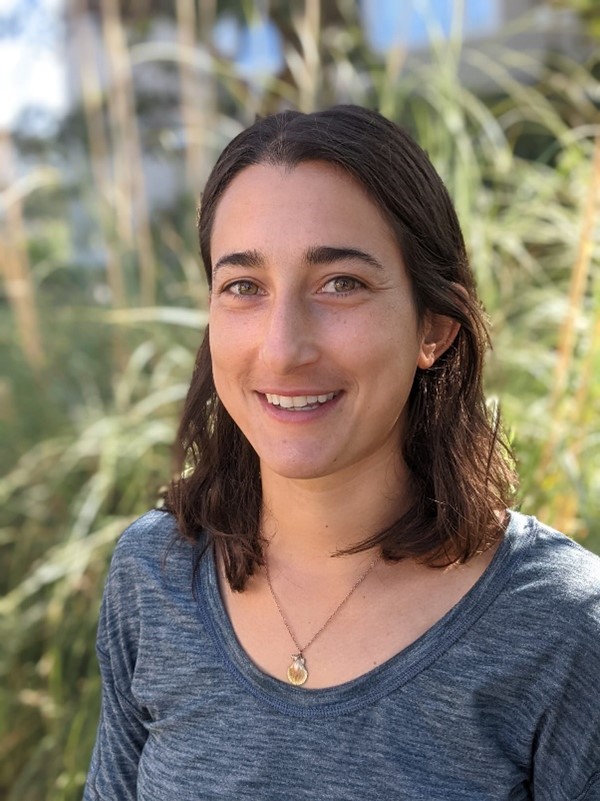
Maia Nichols, University of California, San Diego
Maia Nichols is a Lebanese American-Canadian doctoral candidate in art history, criticism and theory at University of California San Diego specializing in 20th century French and North African visual and material culture, postcolonial theory, and the history of social psychiatry. She holds degrees in psychology and visual art from the University of British Columbia in Vancouver and a masters in aesthetics and politics from the California Institute of the Arts. She additionally engages in art practice and has taught studio art drawing at UC San Diego. Her work has been exhibited internationally. Her art criticism has been published in venues such as Flash Art International, Hyperallergic, and Diagram. Her dissertation, researched in France with support from a four-year Canadian Social Sciences and Humanities Research Council Doctoral Fellowship, engages art historical visual and material culture methods and theories to consider the institutional history of French colonial North Africa’s progression to independence during the social psychiatry movement, drawing on a range of archival evidence of material culture and experience.
ABOUT THE PROFESSIONAL DEVELOPMENT FELLOWSHIP
CAA’s Professional Development Fellowship program supports promising artists and art historians who are enrolled in MFA and PhD programs nationwide. Awards are intended to help them with various aspects of their work, whether for job-search expenses or purchasing materials for the studio. CAA believes a grant of this kind, without contingencies, can best facilitate the transition between graduate studies and professional careers. The program is open to all eligible graduate students in the visual arts and art history. Applications for the 2022 fellowship cycle will be due December 15, 2022. Learn more.
Black History Month and Art Journal Open
posted by CAA — Feb 10, 2022
Each week this Black History Month, we highlight the rich scholarship and programs produced at CAA that celebrate, recognize, and interrogate Black art, history, and experience. This week, we are sharing a bibliography of articles from our online, open-access journal Art Journal Open that addresses these topics.
 Aranke, Sampada. “Objects Made Black.” Art Journal Open (February 9, 2015). Crossover article from Art Journal 73, no. 3 (Fall 2014) reviewing Huey Copeland, Bound to Appear: Art, Slavery, and the Site of Blackness in Multicultural America, Chicago: University of Chicago Press, 2013. Aranke, Sampada. “Objects Made Black.” Art Journal Open (February 9, 2015). Crossover article from Art Journal 73, no. 3 (Fall 2014) reviewing Huey Copeland, Bound to Appear: Art, Slavery, and the Site of Blackness in Multicultural America, Chicago: University of Chicago Press, 2013. |
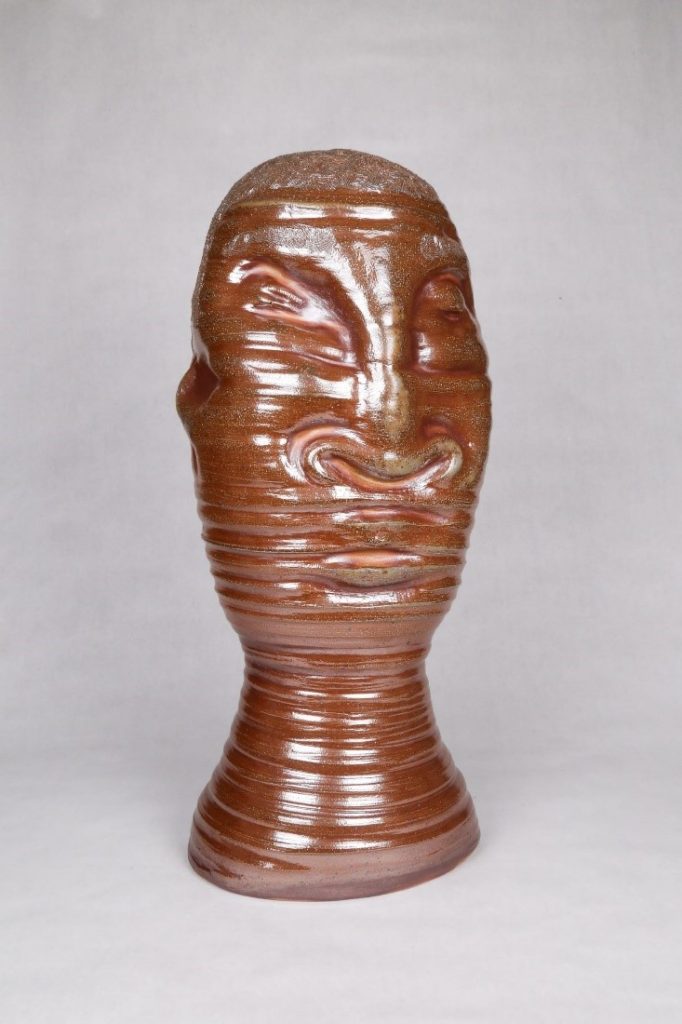
Baralaye, Ebitenyefa and Glenn Adamson. “The Weight of Matter: Ebitenyefa Baralaye and Glenn Adamson in Conversation.” Art Journal Open (May 20, 2021). Ebitenyefa Baralaye, Portrait I (multiple views), 2020, salt-glazed stoneware, 25 x 12 x 10 in.
|
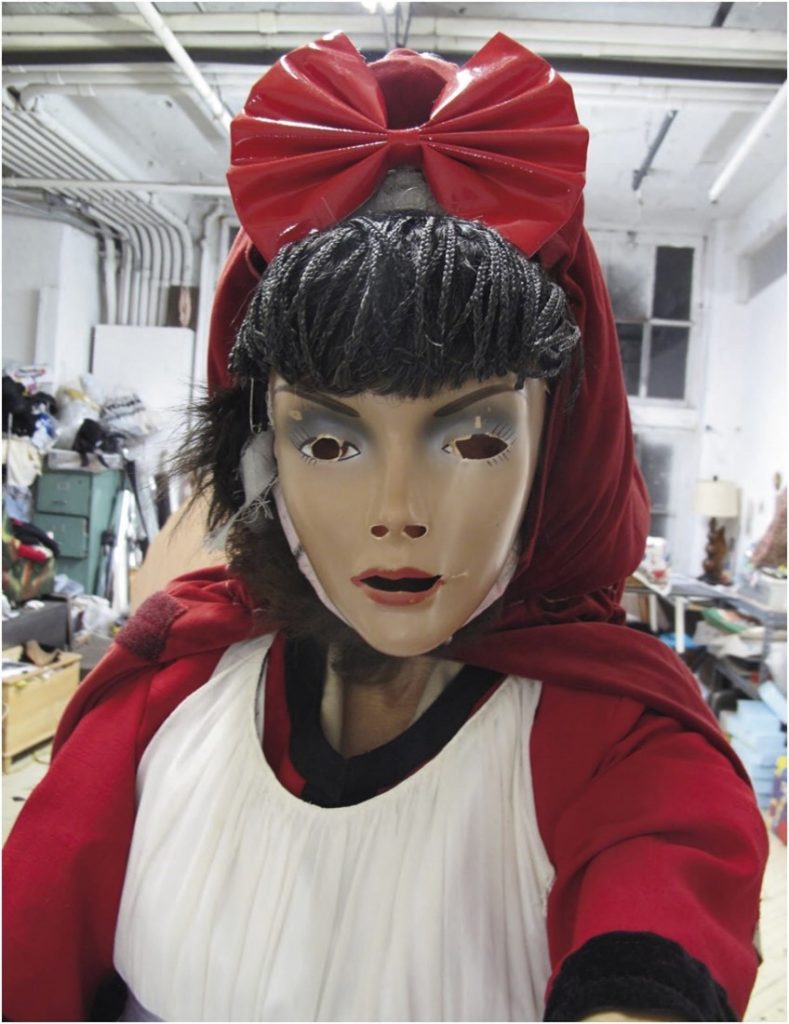
Barber, Tiffany E. “Narcissister, a Truly Kinky Artist.” Art Journal Open (March 11, 2020). Narcissister, Red Riding Hood, 2014, mixed media (photograph provided by the artist).
|

Best, Makeda. “Interview with Texas Isaiah.” Art Journal Open (April 8, 2021). Crossover article from Art Journal 80, no. 1 (Spring 2021). Texas Isaiah, don’t kill this vibe, 2018 (artwork © Texas Isaiah; photograph provided by the artist)
|
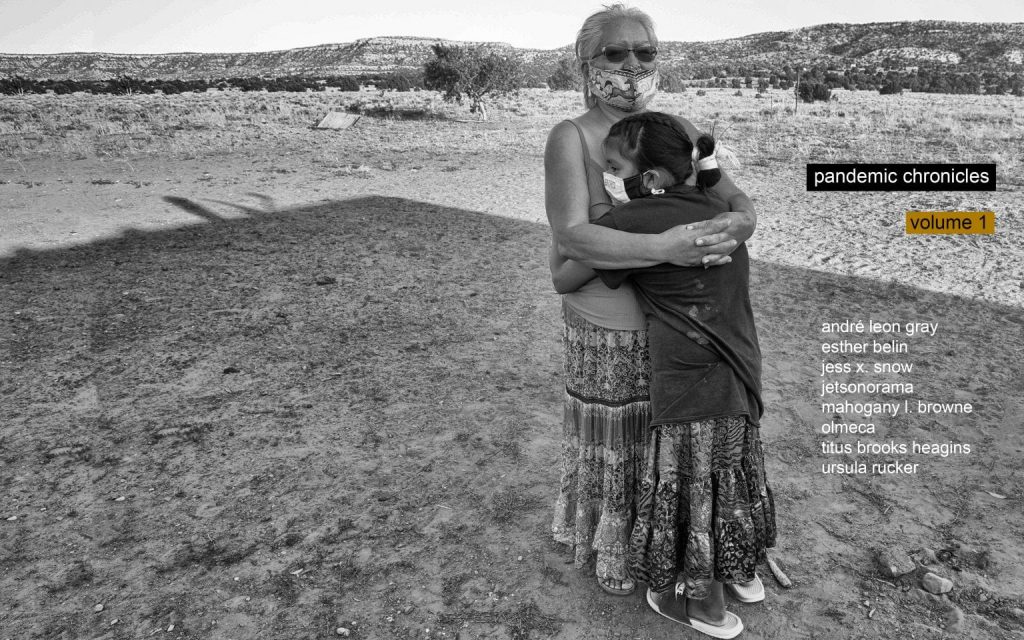
Childs, Adienne L. Riffs and Relations: African American Artists and the European Modernist Tradition. Washington, DC and New York: Phillips Collection in association with Rizzoli Electa, 2020. Sanford Biggers, Negerplastik, 2016, repurposed antique quilt, cotton fabric fragments, tar, and glitter, 81 × 76 3/4 in. (205.7 x 195 cm) (photograph by Todd-White Art Photography, provided by Massimo De Carlo, Milan/London/Hong Kong)
|
 Cunningham, Nijah. “With Each Other.” Art Journal Open (October 14, 2021). Crossover article from Art Journal 80, no. 3 (Fall 2021) reviewing Nicole R. Fleetwood. Marking Time: Art in the Age of Mass Incarceration. Cambridge, MA: Harvard University Press, 2020. Cunningham, Nijah. “With Each Other.” Art Journal Open (October 14, 2021). Crossover article from Art Journal 80, no. 3 (Fall 2021) reviewing Nicole R. Fleetwood. Marking Time: Art in the Age of Mass Incarceration. Cambridge, MA: Harvard University Press, 2020. |

Dally, Jenny and Fred Eversley. “The Object and You: Fred Eversley in Conversation with Jenny Dally.” Art Journal Open (February 25, 2021). Fred Eversley in his Venice Beach studio, 2018 (photograph by Elon Schoenholz; photograph provided by David Kordansky Gallery, Los Angeles)
|
 Gaines, Malik. “City after Fifty Years’ Living: LA’s Differences in Relation.” Art Journal Open (July 17, 2012). Gaines, Malik. “City after Fifty Years’ Living: LA’s Differences in Relation.” Art Journal Open (July 17, 2012).
Ice Cube Celebrates the Eames, poster, 2011 (artwork © J. Paul Getty Trust)
|

Gale, Nikita and Jesús Fuenmayor. “Barricades of Silence: Nikita Gale in Conversation with Jesús Fuenmayor.” Art Journal Open (August 20, 2020). Nikita Gale, INTERCEPTOR, 2019, installation view, Fall Apart: Nikita Gale & Pat O’Neill, Martos Gallery, New York, January 11–February 24, 2019 (artwork © Nikita Gale; photograph by Charles Benton/Martos Gallery, provided by the artist),
|

Gbadegesin, Olubukola A. “Damon Davis’s Negrophilia: Encounters with Black Death.” Art Journal Open (August 30, 2017). Damon Davis, Untitled (2), 2015, bookprint, ink, watercolor, adhesive, from the series Negrophilia (artwork © Damon Davis)
|

Majeed, Risham and Blake Bradford. “Just Being.” Art Journal Open (May 22, 2020). Albrecht Dürer, Portrait of a Black Man (untitled), 1508, black chalk on paper. Original shown here; the NMAAHC has a reproduction in the Middle Passage galleries.
|

Raiford, Leigh. “Burning All Illusion: Abstraction, Black Life, and the Unmaking of White Supremacy.” Art Journal Open (January 14, 2021). Samuel Levi Jones, Joshua, 2016, deconstructed Illinois law books on canvas, 61½ x 77 in. (156.2 x 195.6 cm) (artwork © Samuel Levi Jones; photograph provided by Galerie Lelong)
|
 Sifuentes, Aram Han. “How Internalized White Supremacy Manifests for My BIPOC Students in Art School.” Art Journal Open (July 8, 2021). Sifuentes, Aram Han. “How Internalized White Supremacy Manifests for My BIPOC Students in Art School.” Art Journal Open (July 8, 2021).
Cute Rage Press (Aram Han Sifuentes and Ishita Dharap), detail of Taking Receipts:
|
| Saggese, Jordana Moore, Cauleen Smith, Charles Gaines, Edgar Arceneaux, Howardena Pindell, Michael Ray Charles, and Glenn Ligon. “A Call to Artists.” Art Journal Open (October 26, 2021). Crossover article from Art Journal 80, no. 3 (Fall 2021).
|

Tani, Ellen Y. “Come Out to Show Them: Speech and Ambivalence in the Work of Steve Reich and Glenn LigonSpeech and Ambivalence in the Work of Steve Reich and Glenn Ligon.” Art Journal Open (December 23, 2019). Glenn Ligon, Come Out Study #13, 2014, silkscreen on canvas on panel, 36 x 47 7/8 in. (91.4 x 121.6 cm) (artwork © Glenn Ligon; photograph by Ronald Amstutz, provided by the artist, Hauser & Wirth, New York, Regen Projects, Los Angeles, Thomas Dane Gallery, London, and Chantal Crousel, Paris)
|

Thompson, Krista. ““I WAS HERE BUT I DISAPEAR”: Ivanhoe “Rhygin” Martin and Photographic Disappearance in Jamaica.” Art Journal Open (August 14, 2018). Production still from The Harder They Come, 1972, 16mm color film, dir. Perry Henzell, cinematography by Frank St. Juste, David McDonald, and Peter Jessop, produced by International Films / Xenon Pictures (photograph published under fair use)
|
 Williams, Stephanie Sparling. “Artful Embodiment: Genealogies of the Impossible.” Art Journal Open (November 27, 2018). Crossover article from Art Journal 77, no. 3 (Fall 2018) reviewing Uri McMillan, Embodied Avatars: Genealogies of Black Feminist Art and Performance, New York: New York University Press, 2015. Williams, Stephanie Sparling. “Artful Embodiment: Genealogies of the Impossible.” Art Journal Open (November 27, 2018). Crossover article from Art Journal 77, no. 3 (Fall 2018) reviewing Uri McMillan, Embodied Avatars: Genealogies of Black Feminist Art and Performance, New York: New York University Press, 2015. |
 Winslow, Margaret. “Pope.L: The Body and Its Void.” Art Journal Open (January 14, 2021). Crossover article from Art Journal 79, no. 4 (Winter 2020) reviewing member: Pope.L, 1978–2001., exhibition organized by Stuart Comer with Danielle A. Jackson. Museum of Modern Art, New York, October 21, 2019–February 1, 2020. Winslow, Margaret. “Pope.L: The Body and Its Void.” Art Journal Open (January 14, 2021). Crossover article from Art Journal 79, no. 4 (Winter 2020) reviewing member: Pope.L, 1978–2001., exhibition organized by Stuart Comer with Danielle A. Jackson. Museum of Modern Art, New York, October 21, 2019–February 1, 2020. |

Zorach, Rebecca. “Art and Soul: An Experimental Friendship between Street and Museum .” Art Journal Open (September 4, 2011). Art & Soul exterior with Rainbow mural by Sachio Yamashita, 1969 (mural now destroyed) (mural artwork © Eileen Petersen Yamashita, all rights reserved, used with permission; photograph © Ann Zelle)
|
Committee on Women in the Arts (CWA) Picks: September
posted by CAA — Sep 26, 2021
The September Picks from the Committee on Women in the Arts highlights a selection of events, exhibitions, and calls for work that includes feminist and womxn artists, and addresses issues about reproductive rights and the female body, equal access to education, and previously under-recognized contributions from womxn artists to the visual arts.
Carmen Winant: The Making and Unmaking of the World
September 18, 2021 – November 27, 2021
Carmen Winant’s work is engaged with the politics, value, and meaning of caretaking and labor traditionally taken on by women. The Making and Unmaking of the World includes nine mobiles, eight collages, and a large-scale, site-specific installation entitled The Actual World (2021). These works combine photographic materials that Winant has collected from instructional books about craft from the 1970s. Both her approach to making these pieces and the source material itself challenge the categorization of fine art vs. craft.
GAIA FUGAZZA: VIRGINITY IS NOT A CONTRACEPTIVE
September 13, 2021 – October 22, 2021
Gaia Fugazza’s Virginity Is Not a Contraceptive includes several mixed-media pieces that reference the female body and fertility juxtaposed with imagery of the cosmos and the natural world. Fugazza’s work is layered and carved, marked by the artist’s hand, and often incorporates natural materials such as beeswax and animal skin. The artist takes great care to reveal and conceal certain aspects of each composition, referencing the complicated and multifaceted nature of identity and the interconnected nature of life.
For the Record: Celebrating Art by Women
continues through October 3, 2021
For the Record: Celebrating Art by Women is made up of pieces from the Norton Museum of Art’s collection that specifically reference the role of women’s contributions in the visual arts. The exhibit includes painting, sculpture, works on paper, photography, and video from both 20th and 21st-century artists and emphasizes their varied and diverse practices. The exhibit also encourages viewers to consider gender equity both within and outside of the art world.
Hair Stories
July 17, 2021 - October 31, 2021
Cushing & Morris Galleries
Hair Stories brings together artists whose work centers around hair as a subject or material. The exhibit frames the political, cultural, and gendered implications of hair and offers a more nuanced understanding of its role in shaping our understanding of ourselves and others. Featured artists include Eunice Adorno, Melanie Bilenker, Tara Bogart, María Magdalena Campos-Pons, Sonya Clark, Sean M. Johnson, Nneka Kai, Vivian Keulards, Wangui Maina, Ana Mendieta, Patricia Miranda, Zanele Muholi, J.D. ‘Okhai Ojeikere, Rachel Portesi, Shahzia Sikander, Lorna Simpson, Gu Wenda, Nafis M. White, Anne Wilson, and D.M. Witman.
Any Distance Between Us
July 17, 2021 – March 13, 2022
Any distance between us is curated by artist-writer Stephen Truax (RISD BFA 2007, Painting) in collaboration with Dominic Molon, the Richard Brown Baker Curator of Contemporary Art at RISD Museum and focuses on works from the museum’s collection that explore the importance of intimate relationships. The exhibit is made up of works by 25 artists who identify as Queer and of color including, Louis Fratino, Aaron Gilbert, Doron Langberg, Deana Lawson, Catherine Opie, Jack Pierson, Elle Pérez, and Salman Toor.
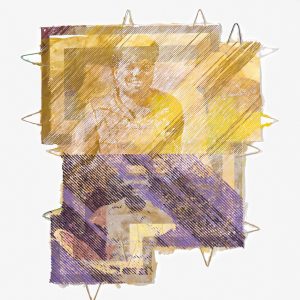
Tomashi Jackson, detail from Brown II, 2021. Image courtesy of the artist and the Tilton Gallery
Tomashi Jackson: Brown II
September 20, 2021–January 15, 2022
Tomashi Jackson’s Brown II, commissioned by the Harvard Radcliffe Institute, explores the landmark Brown v. Board of Education of Topeka Supreme Court decision. Working with a research team of students Jackson interviewed experts and culled the Schlesinger Library archives to inform her practice and visual this historic moment.
CWA Picks: April 2021
posted by CAA — Apr 27, 2021
Committee on Women in the Arts celebrate a selection of events, exhibitions and calls for work and participation featuring feminist and womxn artists, and address issues about social justice and ethics from intersectional and transnational perspectives. To acknowledge that Covid-19 continues but also to begin envisioning the re-opening of public spaces, we have decided to feature both on-line and in-person events.
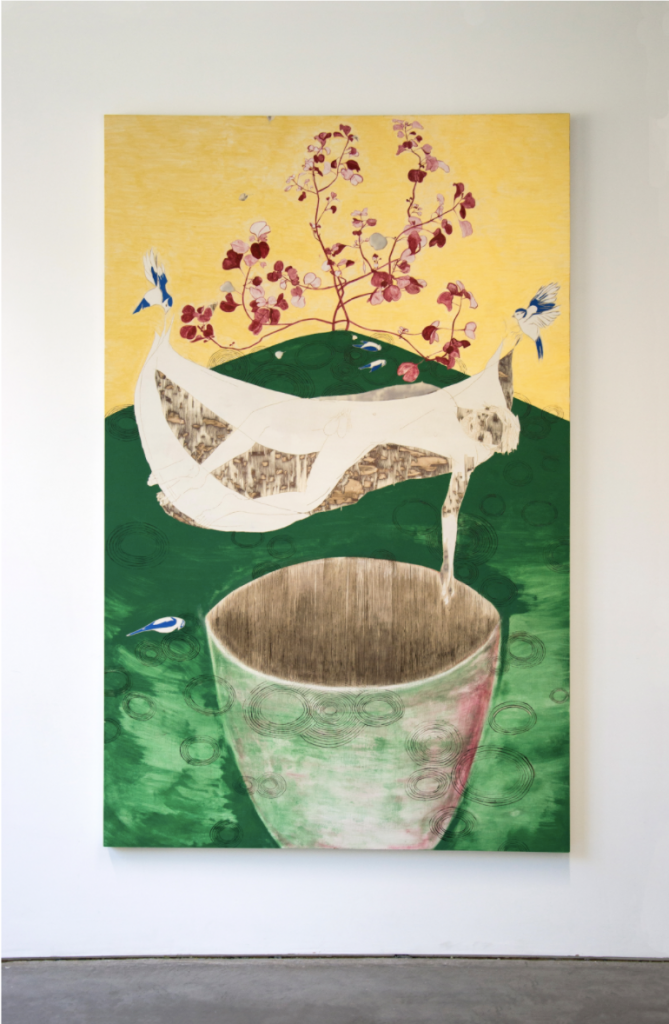
Gaia Fugazza, Blue Tits, 2020, Mineral pigment, beeswax, oil paint, watercolor on carved wood, 180 x 115 cm
Love Letters
April 10 to July 2, 2021
On-line
http://almanacprojects.com/public-programme/love-letters
An epistolary project developed by Basia Sliwinska and Astrid Korporall, Love Letters is a virtual platform that responds to the rise of gender-based violence around the globe and fosters feminist love across the national and cultural boundaries Covid-19 has made more severe. The October 2020 ruling by Poland’s Constitutional Tribunal that abortions in the case of fetal defects are unconstitutional is its animating occasion. Love Letters features the work of six artists–Gaia Fugazza, Małgorzata Markiewicz, Amanda Millis, Joanna Rajkowska, Viktoriia Tofan, and Katarzyna Zimna—who have created work to reflect on the fraught political landscape that gave rise to such a ruling. Proceeds from the sale of the artwork will benefit the All-Poland Women’s Strike (Ogólnopolski Strajk Kobiet: OSK). Composed by Sliwinska and Korporall, the letters that accompany the artwork featured in the on-line exhibition space attend lovingly to how they address the necessity of feminist solidarity in a broken, precarious world.
Lorraine O’Grady: Both/And
March 5 to July 18, 2021
Brooklyn Museum of Art, Elizabeth A. Sackler Center for Feminist Art
https://www.brooklynmuseum.org/exhibitions/lorraine_ogrady
Long overdue and much-anticipated, Both/and is Lorraine O’Grady’s first retrospective. Featuring four decades of artwork that spans performance art, conceptualism, and institutional critique, this exhibition highlights the feminist and decolonial commitments of O’Grady’s oeuvre, which is materially idiosyncratic but thematically consistent. Both/and foregrounds O’Grady’s challenge to fixed positions while also tracking how she has kept western modernity’s reliance upon and erasure of Blackness squarely in view.
Born in Flames: Feminist Futures
April 28 to September 12, 2021
The Bronx Museum of the Arts
http://www.bronxmuseum.org/exhibitions/born-in-flames-feminist-futures
This inter-generational group exhibition speculates on a damaged past for the possibilities of a joy-filled future. Taking its title from Lizzie Borden’s 1983 science fiction film that explored the unjust remainders of a socialist revolution, the spirited, phantasmatic, and highly physical artwork featured in Born in Flames seeks to imagine worlds beyond the entrenched logic of capitalist exploitation. Together the artwork declares that the figurations of women, and the oppressions they have carried in historical time, must be central to such hopeful gestures if they are going to take hold in future realities.
Memorializing the Natural Environment: Maya Lin in conversation
Thursday, May 6, 2021, 6–7 p.m.
Virtual Conversation
https://www.colby.edu/lunderinstitute/memorializing-the-natural-environment/
Artist and designer Maya Lin will be in conversation with Colby University faculty about the process of remembering all that environmental degradation is taking from the planet and how to utilize that archive to forestall further disasters. She will reflect on What is Missing? her multimedia project devoted to the global biodiversity crisis related to the disappearance of habitats. What is Missing? underscores Lin’s talent for yoking the microscopic together with the monumental and sculpting the landscape with heavy but delicate inscriptions of loss.
Senga Nengudi: Topologies
May 2-July 25, 2021
Philadelphia Museum of Art
https://philamuseum.org/calendar/exhibition/senga-nengudi-topologies
Chronicling the entirety of her oeuvre, Topologies offers an in-depth look into Nengundi’s artwork and its precise deployment of the opaque, distorted, and porous. Featuring her sculptures, environmental installations, and performances, and going back to her career’s beginnings in the 1970s, Topologies shows the various and inter-related ways this key figure of the Black American avant-garde suspended the body in ceremonial planes composed of fragile and tough materials as it awaits a more just ground.
Family Tree Whakapapa: Elin, Madeleine, Sarah and Susanne Slavick
April 21 to June 13, 2021
Long Gallery, The Pah Homestead, TSB Wallace Arts Centre
Auckland, New Zealand
https://www.wallaceartstrust.org.nz/exhibitions/whakapapa
This exhibition brings together the artwork of four sisters living in different parts of the globe and focuses on the related and but distinct ways they engage with the arboreal imagination. Tangled into their photographs, paintings, life histories, and political commitments, the trees in their artwork are intricate lines, bold shapes, diffuse traces, and stylized patterns. Defying the ease with which the genealogical and botanical connect in the figure of the family tree, the Slavick sisters make it a thing of wonder: rooted in the ground and multiplying in our imaginations, family trees are botany and biology written with longing, hope, history, and loss.
Lygia Pape: Tupinambá
April 24 to August 1, 2021
Hauser and Wirth, Los Angeles
https://www.hauserwirth.com/hauser-wirth-exhibitions/31619-lygia-pape-tupinamba
This exhibition, Lygia Pape’s first solo show in Los Angeles, features her Tupinambá series, one of the final bodies of work created by this founding member of Brazil’s Neo-Concrete movement. Pape’s use of bright red artificial feathers is a central feature of Tupinambá. Sensuous and regal, they cover chairs, boxes, and balls and point to Pape’s sustained interest in the Indigenous people of Brazil. With her understated surrealism, Pape makes the objects look like dense fragments of far-away rituals. The Memória Tupinambá, a series of three balls covered with red feathers and punctuated with plastic body parts, suggests their sexualized violence: one holds out a hand streaked with blood, one shows a bloody foot, and the third displays two plastic breasts.
Oh, I’m definitely a dessert person
April 24 to May 28, 2021
WHATIFTHEWORLD
Western Cape, South Africa
http://www.whatiftheworld.com/presentation/oh-im-definitely-a-dessert-person/
The I-phone plays multiple roles in Talia Ramkilawan’s charming pictures, which she makes by “rug hooking” bright pastel fabrics, wools, and hessian. It is clear from the accidental fragments, titillating hints of sex, selfie shots, and everyday domestic scenes (birthday parties) and objects (a cake, vases of flowers, a dildo), that Ramkilawan draws from her camera roll, but she also places I-phones in the images themselves. Complete with heart emojis, the phones transmit the unabashedly sweet touch of these images, their “hand-held” feel and hot-pink youth. Ramikilawan’s titles, talky poem-“texts” of one or two lines, crystallize the Black femme wit of her crafty depictions.
CAA at 2021 Advocacy Days
posted by CAA — Apr 16, 2021
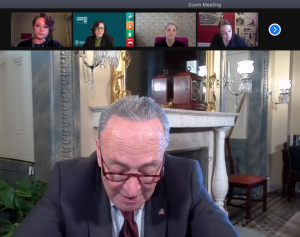
Screenshot of CAA in virtual conversation with NY Senator Chuck Schumer, 2021
CAA representatives advocated for the arts and humanities with partners at the American Association of Museums (AAM) and the National Humanities Alliance (NHA) this spring for Museums Advocacy Day on February 23 and Humanities Advocacy Day on March 11, 2021. Alongside other academic societies, scholars, and museum professionals, CAA urged congressional representatives and senators to back full funding for the National Endowment for the Arts (NEA), the National Endowment for the Humanities (NEH) and particularly the Institute for Museum and Library Services (IMLS), which provides grants for museums and arts organizations throughout the country, for the fiscal year 2022. Increased allocations for these programs would bring funding levels back to what they were over a decade ago in 1998. We met with the offices of New York representatives Tom Reed, Jerry Nadler, Carolyn Maloney, John Katko, and Yvette Clarke and senators Kirsten Gillibrand and Chuck Schumer. Sen. Schumer joined Museums Advocacy Day in person to share his enthusiasm about moving forward with emergency relief funds for arts organizations and supporting more space for them in the next year’s congressional budget.
CAA has been participating in these meetings for the past three years. We noted that 1/3 of all museums in the US are at risk of closing without assistance. We also stressed the importance of museums as institutions that have served our community greatly during COVID and have come up with creative solutions for childhood education, community building, virtual exhibitions, and out-of-the-box engagement strategies. The arts and humanities have helped our communities cope and their spaces—schools, libraries, and museums—remain some of the only spaces in communities that can be accessed freely by the public.
International News: “My World Now Is Black in Color:” Pandemic-Era Programming, Anti-Racist Activism, and Contemporary Art in Italy
posted by CAA — Aug 11, 2020
The following article was written in response to a call for submissions by CAA’s International Committee. It is by Tenley Bick, Assistant Professor of Global Contemporary Art, Department of Art History, Florida State University, and the 2019–20 Scholar in Residence at Magazzino Italian Art Foundation, New York. A related essay, “Ghosts for the Present: Countercultural Aesthetics and Postcoloniality for Contemporary Italy,” will be included in an edited volume forthcoming from Lexington Books.
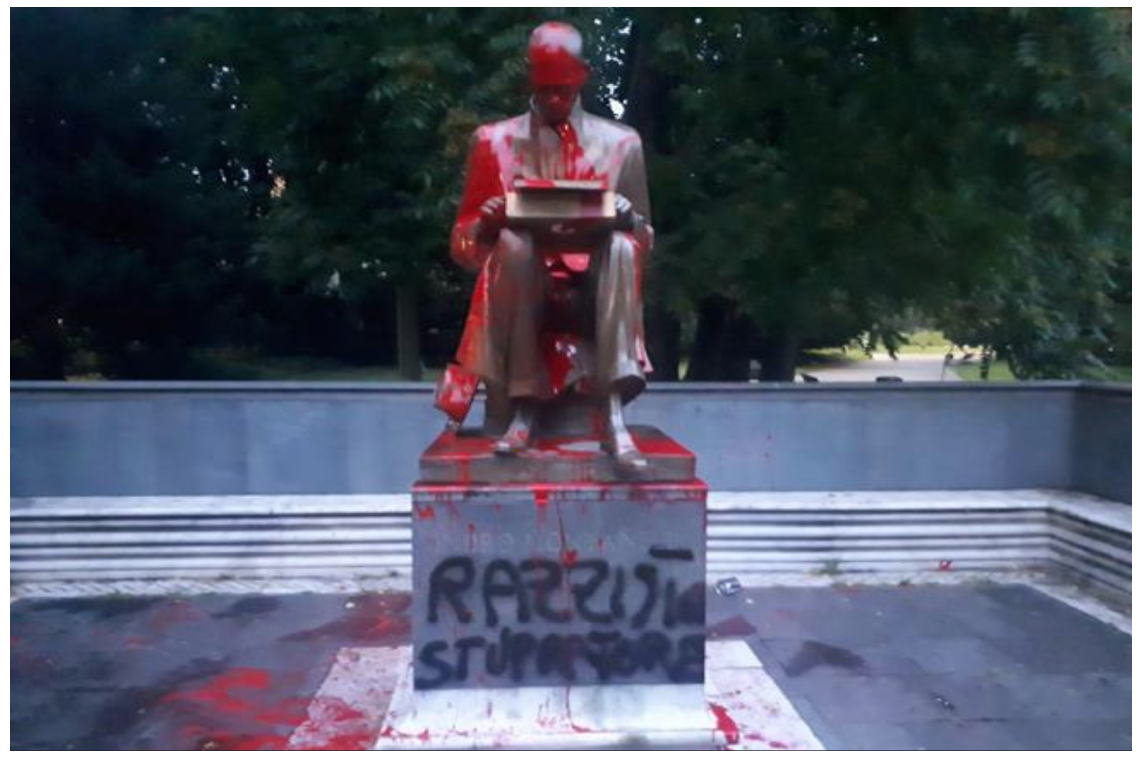
Figure 1. “Indro Montanelli, imbrattata la statua a Milano” (Indro Montanelli, statue smeared in Milan). Corriere della Sera, June 13, 2020 (https://www.corriere.it/cronache/20_giugno_13/indro-montanelli-statua-imbrattata-81a5c120-adad-11ea-84a7-c6d5b5b928b0.shtml). Photo: AP
June 13, Milan. The 2006 monument to Italian journalist Indro Montanelli was found covered in red paint and tagged “razzista, stupratore”: racist, rapist. The intervention targeted the statue of Montanelli and the journalist’s past as a colonial soldier in East Africa. In 1935, Montanelli bought a twelve-year-old Eritrean girl, Destà, to serve as his wife under the practice of madamismo. Montanelli never apologized. The intervention ignited public debate in Italy on racism and public monuments, bringing the country popularly known for apathy toward its colonial and fascist histories, pervasive associated monuments and street names into renewed transatlantic debates on these topics. Four days prior, Italian-Somali writer Igiaba Scego, writing on anti-Black racism, Black Lives Matter, and monument debates in the United States and Europe in the Italian weekly Internazionale, made a call for Italy to confront the “uncomfortable traces of our past.” Citing an earlier intervention at the Montanelli monument in 2019, Scego noted the absent memorialization of Destà: “It would be nice if someone, whether a street artist or a municipality, dedicated a statue, a drawing, a memory to that distant child” (trans. Bick). Street artists and activists responded (Figs. 2–3). Cities did not. The Montanelli monument was cleaned and, by mayoral decision, remains in place.
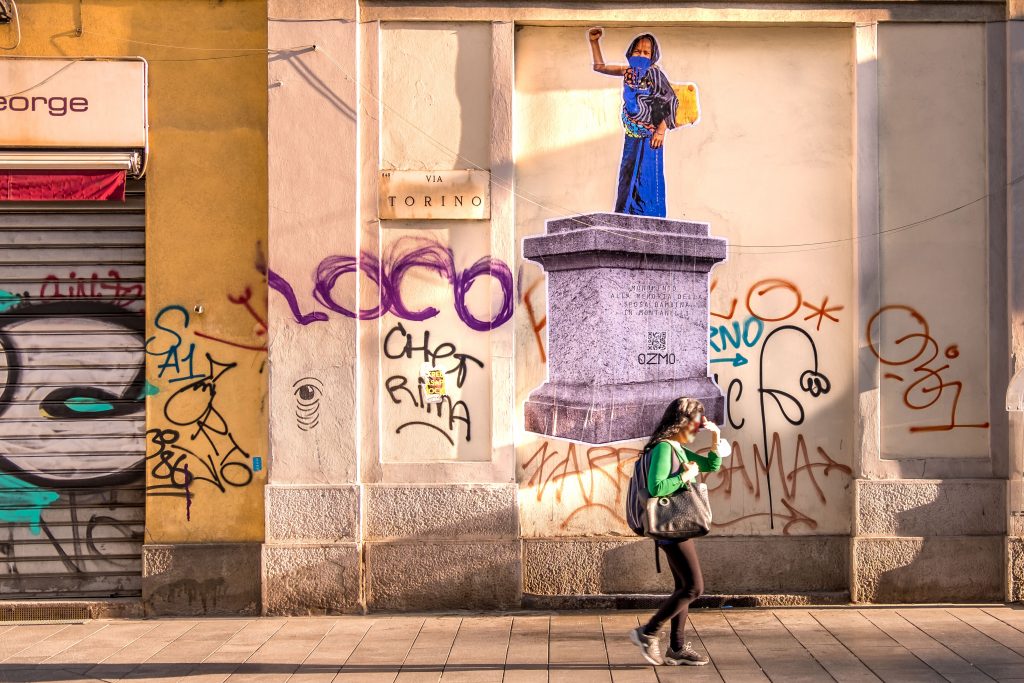
Figure 2. In Milan, Italian street artist Ozmo’s mural depicts a fictional monument to Destà, the Eritrean child “bride” of Indro Montanelli, when the famous journalist was a colonial soldier. Working specifically in response to Igiaba Scego’s call, the artist used a photo of a contemporary Eritrean girl of approximately the same age as Destà upon her “marriage,” to stand defiantly in place of Montanelli on the base of his monument, relabeled in memory to “Montanelli’s child bride” (IG @ozmone, June 15). The mural was vandalized within two days. Inkjet on blueback paper, measurements to site (dimensioni ambientali). Photo by Gianfranco Candida, @wallsofmilano. Courtesy of Ozmo.
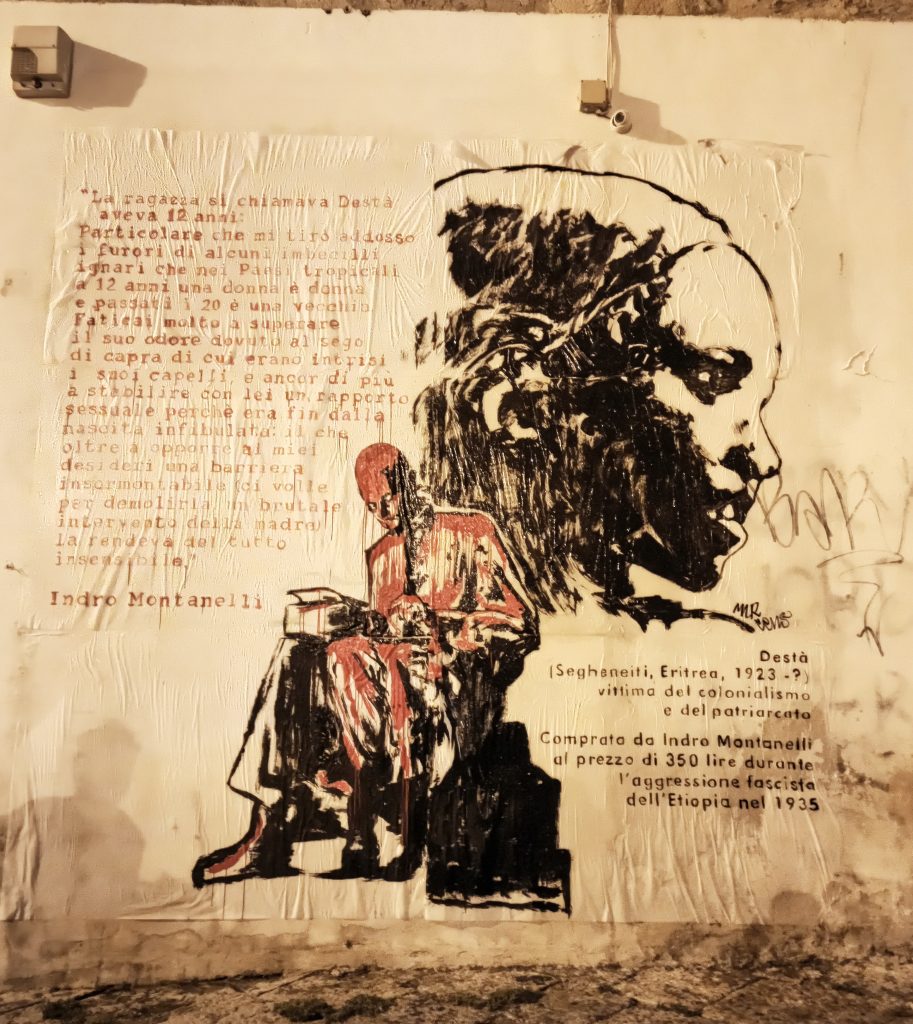
Figure 3. In Palermo, artists Mr. Cens, Betty Macaluso, and Ulrike conceived the mural depicting the vandalized monument to Montanelli and a portrait of Destà. Mr. Cens executed the large public mural. Acrylic on tissue paper, 9.8 x 9.8 ft. (3 x 3 m). Palermo, June 16, 2020. Courtesy of Mr. Cens. The mural builds upon a 2018 work by Wu Ming 2 (Giovanni Cattabriga) and Palermo-based artist collective Fare Ala (Luca Cinquemani, Andrea Di Gangi, Roberto Romano), Viva Menilicchi!, which temporarily renamed via Montanelli “via Destà.”
One of the first hotspots in the COVID-19 pandemic, Italy was then emerging from a three-month lockdown. During that time, Italian museums (public and private) became leaders in innovative arts programming for a pandemic-era world. The Museo Madre launched an #iorestoacasa “call to action” campaign, publishing artists’ responses to the pandemic online; the Galleria Nazionale d’Arte Moderna invited and posted videos about its permanent collection; the Fondazione Prada produced podcasts and alternative exhibition encounters through its #innerviews and #outerviews programs, using social media as a “laboratory” for “new formats and codes” (@FondazionePrada, Mar. 18). This innovation has since extended to safety technology. Florence’s Museo dell’Opera del Duomo introduced wearable sensors to ensure social distancing—technology subsequently implemented by institutions of Italian art outside of Italy. Magazzino Italian Art Foundation (New York) is the first museum in the United States to use the technology, reopening with Homemade (cur. Vittorio Calabrese with Chiara Mannarino), an exhibition of work made during the pandemic by New-York-based Italian artists.
While the Montanelli debate coincided with a moment of reckoning for institutions in the United States and Western Europe, the overwhelming majority of art museums in Italy have not announced such programming, policy changes, or statements of solidarity. This inattention is not due to a lack of anti-racist social justice activism in Italy (Black Lives Matter Roma, Neri Italiani, the Stati Popolari movement, among others), nor is it due to an absence of Black Italians in Italian popular culture, especially in literature (Scego), cinema (Fred Kuwornu, Amin Nour), and music (Ghali).
A few exceptions demonstrate the potential for institutionally supported, sustained, collaborative programs to counter anti-Black racism in Italy. The Uffizi has partnered with Black Lives Matter Florence on a series of virtual programs to address “the presence of black culture in European art, told through the works of the Gallerie degli Uffizi” (https://www.uffizi.it/video-storie/black-presence). Organized by Justin Randolph Thompson, co-founder and director of Black History Month Florence (BHMF), in collaboration and partnership with the Uffizi as part of their On Being Present program, the eight-week series entitled “Black Presence” debuted July 4th with Thompson’s video discussion of a Piero di Cosimo work and continues with concerts and video tours on representations of Black Africans in Renaissance art. MAXXI, one of Italy’s major contemporary museums, launched a short-lived social media initiative: #MAXXIforblacklivesmatter. The campaign “aims in raising awareness and consciousness of the @blklivesmatter movement through art” (@museomaxxi). With eighteen tagged Instagram posts (most recently dated June 17), the museum posted images of BLM protests in Italy and works by African and African diaspora artists Robin Rhode, John Akomfrah, and Yinka Shonibare from MAXXI’s 2018–19 exhibitions. The initiative was highlighted on June 12 by Italian-Haitian-Ghanaian cultural curator and Griot founder Johanne Affricot in an essay for Artribune as a “necessary” if late action amidst the generally delayed response from arts and culture in Italy to BLM in comparison to the global context (“Black Lives Matter ma non in Italia. Il ritardo dell’arte e della cultura nel paese,” June 12). Program information is notably no longer available on MAXXI’s bio.
Beyond these varied efforts, Black artists have been included in major museum and gallery exhibitions, and Black curators have curated exhibitions at prominent museums, but these figures are almost always non-Italian artists and art workers. While Italy is becoming increasingly multi-ethnic (and multi-racial), the country does not track ethno-racial statistics (Reynolds 2018, BBC; Ambrosetti and Cela 2015). Instead, citizenship and place of birth serve as “proxies” for race and ethnicity (Ambrosetti and Cela 2015). This is one of many reasons—from racial laws under fascism to renewed racism in response to cross-Mediterranean migration—why Blackness in Italy is most associated with foreign identity (with populations of African migrants, immigrants, and residents) rather than with Italian identity as well.
Two Afro-Italian artists—Jem Perucchini (b. 1995) and Luigi Christopher Veggetti Kanku (b. 1979), both based in Milan—are making inroads that might change that. Perucchini made a series of portraits of Black Italians in history for Vogue Italia during Black History Month (see Jordan Anderson, Mar. 12, 2020) (Fig. 4).
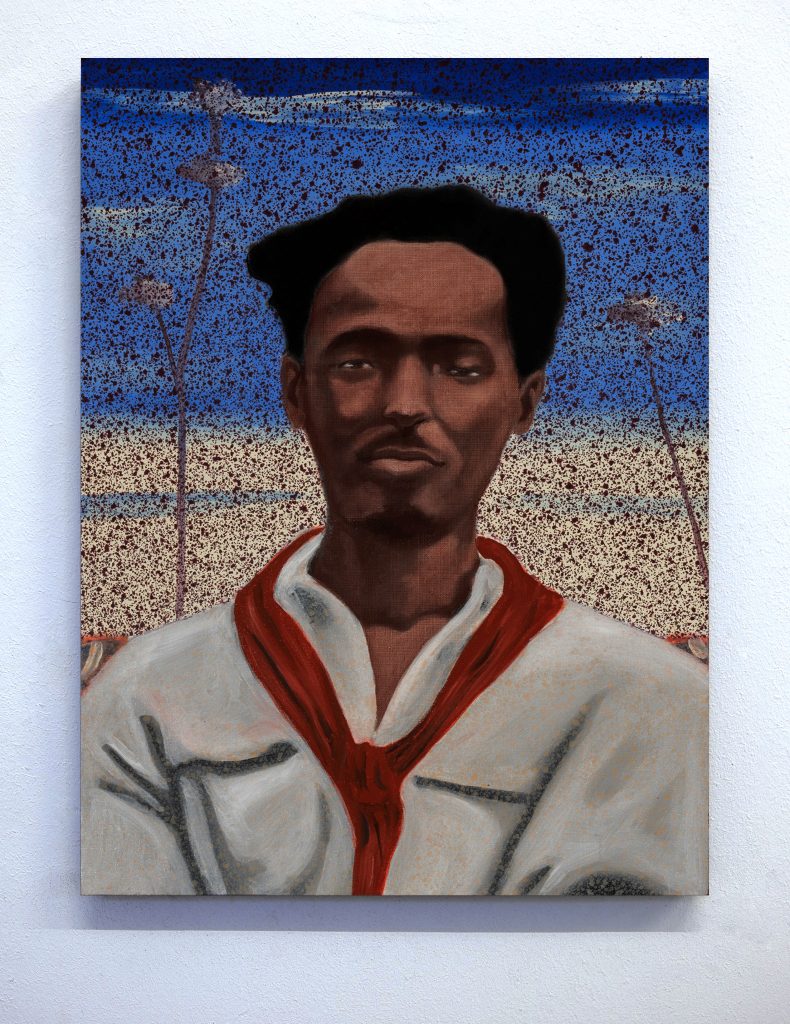
Figure 4. Jem Perucchini’s Alessandro Sinigaglia (2020) depicts a little-known Black, Jewish Italian member of Italy’s anti-fascist resistance during World War II. Oil on linen, 15.75 x 12 in. (40 x 30 cm). Courtesy of Jem Perucchini.
Harper’sBazaarTV followed with a “visual interview” in mid-July. When asked “What colour is your world, these days?” the Ethiopian-Italian artist responded: “Certainly my world now is black in color. I think it is the color that is most suited to represent the situation that the whole world is experiencing, in terms of sanitary, economic, social problems” (interview by Laura Taccari, trans. Bick). At the end of lockdown, Perucchini had completed a large painting of the Stele of Axum: the ancient obelisk that Italy returned to Ethiopia in 2005, nearly seventy years after stealing it as war spoils (Zoom interview with Bick, Fig. 5).
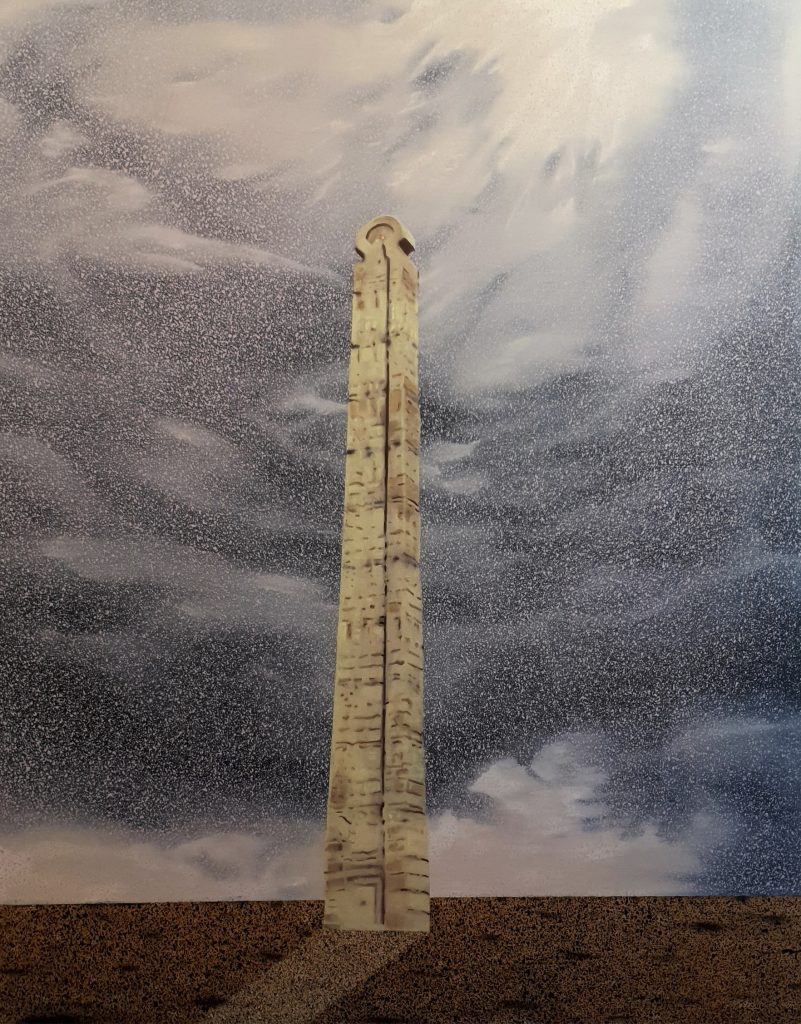
Figure 5. Jem Perucchini, Axum, 2020. Oil on linen, 55 x 43 in. (140 x 110 cm). Courtesy of Jem Perucchini. Completed during the lockdown, Perucchini’s Axum depicts the fourth-century stele that was taken as war spoils during Italy’s second colonial invasion of Ethiopia. The stele remained on display in Rome for nearly seventy years.
Veggetti Kanku (represented by Galleria Rubin, Milan) has confronted the institutional and cultural marginalization of Black people in Italy directly. In late June, the Congolese-Italian artist held a soft opening of a new exhibition space in Milan’s center for Afro-Italian artists (Zoom interview with Bick, Jun. 29). Entitled The Office, the evenings-and-weekends-only arts space is a legal office during regular business hours. Veggetti Kanku’s monumental portraits of Black women (Fig. 6), intended to bring Black figures into (white) Italian bourgeois homes (Griot, Mar. 25; Zoom interview with Bick), hang in the space, to be inaugurated this fall with his solo show SOTTOPELLE: “A show dedicated to black women, inclusive of social status, a show that destabilizes and puts up for discussion the canons of strictly Western beauty in an ever-increasing multi-ethnic Italian reality” (Veggetti Kanku, email correspondence with the author, July 16, trans. Bick).
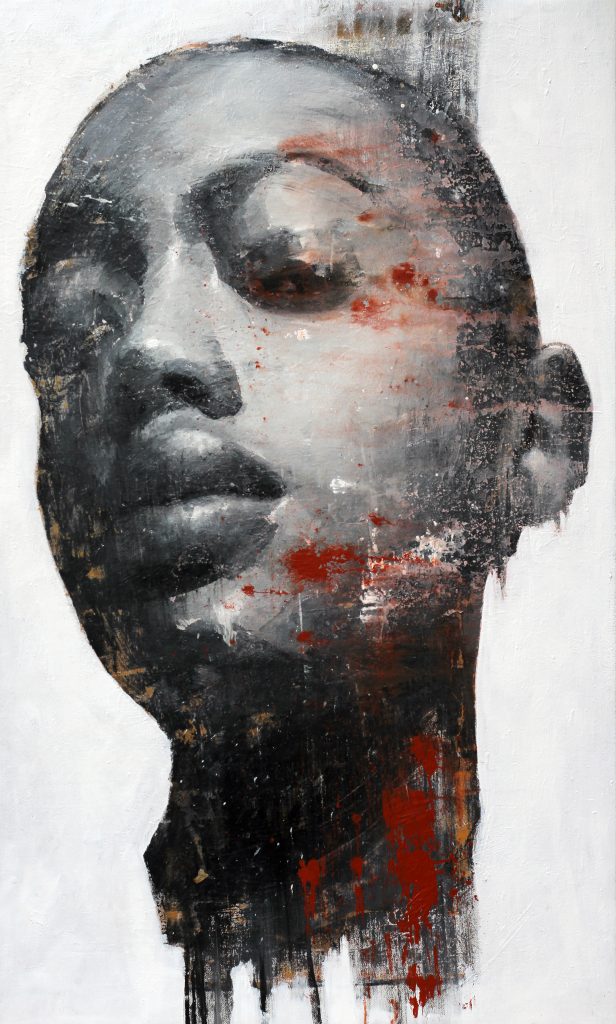
Figure 6. Luigi Christopher Veggetti Kanku, Untitled, 2020. Oil and acrylic on canvas, 65 x 39 in. (165 x 100 cm). Veggetti Kanku’s monumental portraits of Black women will be exhibited in his solo show, SOTTOPELLE (UNDERSKIN) at his new space for Afro-Italian artists, The Office, located in the center of Milan.
The museum complex now perhaps most directly engaged with Italy’s colonial history, the Museo delle Civiltà (home to Italy’s national ethnographic museum and partial repository of Italy’s colonial collection, formerly at the Museo Coloniale di Roma and various iterations that followed), has announced plans for a new museum (in development since 2017) dedicated to Italian colonialism in Africa (including postcolonial periods and an engagement with contemporary art): the Museo Italo-Africano Ilaria Alpi, to open in 2023. (See Scego, and Giulia Grechi and Viviana Gravano’s interview with colonial collections’ curator and cultural anthropologist Rosa Anna Di Lella in Roots–Routes). As Italy begins to address the presentness of its colonial past, the absence of Black Italian artists in Italy’s museums and galleries persists. What might a Perucchini or Veggetti Kanku exhibition look like at MAXXI or the Galleria Nazionale? What might happen if the innovation of Italian arts programming and centrality of the arts to Italian identity made space for the multi-ethnicity of Italy today? It remains to be seen if and how the country’s art museums and galleries—leaders in arts programming in many ways—will address racial inequity in their own collections.
Affiliated Society News for Summer 2020
posted by CAA — Jul 06, 2020
Affiliated Society News shares the new and exciting things CAA’s affiliated organizations are working on including activities, awards, publications, conferences, and exhibitions.
Interested in becoming an Affiliated Society? Learn more here.
Art Libraries Society of North America (ARLIS/NA)
ARLIS/NA will be holding its 2021 Annual Conference in Montréal, Québec, Canada from May 9 through May 15 at the Hotel Bonaventure, Montreal. For update information please see https://www.arlisna.org/news/conferences/1405-2021-49th-annual-conference.
On June 8, 2020 ARLIS/NA issued its Statement Against Anti-Black Racism and Violence which can be accessed here: https://www.arlisna.org/news/news-events/2057-arlis-na-advocacy-statement-against-anti-black-racism-and-violence
Nominations are open for the following Executive Board positions: Vice President/President Elect, Secretary, Advancement Liaison, and Chapters Liaison; nominations must be received by July 13, 2020 for terms beginning at the Montreal Conference in May 2021. For more information please see the official announcement here: https://www.arlisna.org/news/news-events/2056-call-for-interest-nominations-for-2021-executive-board
BSA (Bibliographical Society of America)
- Applications due September 8 for BSA’s 2021 New Scholars Program: The Bibliographical Society of America’s New Scholars Program seeks to promote the work of scholars who are new to the field of bibliography, broadly defined. The New Scholars selection committee welcomes new methods and new approaches, including applications from candidates applying bibliographical theory and principles to diverse materials and media. In addition, the committee welcomes scholarly submissions that embrace diverse, multicultural perspectives. The committee particularly encourages applications from those who have not previously published, lectured, or taught on bibliographical subjects.International applicants are welcome to apply. New: Joint applications will be accepted in 2021. For more information, see https://bibsocamer.org/awards/new-scholars-program/.
- Applications due November 1 for BSA Fellowships: To foster the study of books and other textual artifacts in traditional and emerging formats, and in keeping with the value which the Society places on the field of bibliography as a critical interpretive framework for understanding such artifacts, the BSA funds a number of fellowships designed to promote bibliographical inquiry and research. For more information see https://bibsocamer.org/awards/fellowships/.
- Community Subtitling Project: The BSA records many events to offer free, virtual programming to a broader public. These videos are accessible through the BSA’s YouTube channel. To improve accessibility, as of Spring 2020 we are working to provide edited English and other language subtitles, with a focus on Spanish. We need English speakers to edit automated transcriptions, and speakers of other languages to translate them in YouTube. We are pleased to offer free one year memberships to all who submit complete translations of edited English transcripts of individual videos. We created a guide to editing English subtitles and to adding foreign language translations that you can view on our website, here.
La guía también está disponible en español, aquí.
- June 2020 (vol 114:2) issue, The Papers of the Bibliographical Society of America:
Articles
Sonia Hazard, “The American Tract Society and the Refinement of the Evangelical Book, 1825–1861”
David Atkinson, “Distribution of Street Literature in the Later Eighteenth Century: Some Imprint Evidence from the West of England”
MacDonald P. Jackson, “Two Variants in Poems by Keats: Textual and Literary Evidence”
Book Reviews
Jung, Sandro. The Publishing and Marketing of Illustrated Literature in Scotland, 1760–1825
Reviewed by Kristin Bluemel
Stephens, Walter, and Earle A. Havens, eds. Literary Forgeries in Early Modern Europe 1450–1800
Reviewed by Linda Isaac
Duncan, Sara Jeanette. A Social Departure: How Orthodocia and I Went Round the World by Ourselves. Ed. Linda Quirk, with Cheryl Cundell
Reviewed by Kathryn James
Lallier, Monique. Monique Lallier: A Retrospective
Reviewed by Kevin M. O’Sullivan
Association for Modern and Contemporary Art of the Arab World, Iran, and Turkey
CFP: Modern Art in the Arabian Peninsula: A collection of essays to be published in collaboration with Barjeel Art
Foundation and the Association for Modern and Contemporary Art of the Arab World, Iran, and Turkey (AMCA)
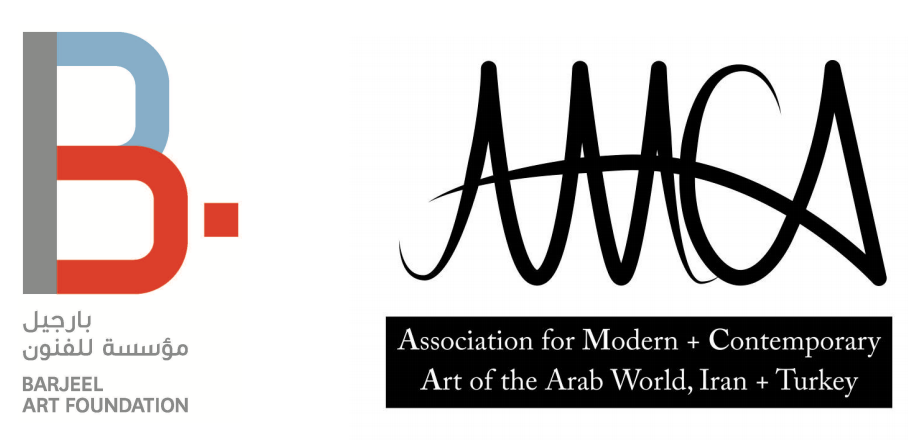
Over the last two decades, the Arabian Peninsula has been the subject of critical attention regarding the rapid development of art initiatives and institutions, notably blockbuster transnational partnerships and attendant labor inequities. Less attention, however, has been given to the longer history of modern art in the region and the Peninsula’s artistic practices in comparative perspective. This publication brings together scholarly voices from across disciplines to consider the various movements, schools, collectives, manifestos, and debates that emerged in the countries of the Arabian Peninsula: Bahrain, Kuwait, Oman, Qatar, Saudi Arabia, United Arab Emirates, and Yemen throughout the 20th century. Contributions might address the following subjects: artists’ monographs, aesthetic debates in the press, artists’ collectives, exhibition histories, role of public sculpture, and the contextualization of art movements within regional histories. Themes may also consider the international scope of exhibitions and events that have molded the Arabian Peninsula into a global art capital. This call for essays welcomes scholarly explorations centered on the exchange of art and ideas between Gulf countries and their neighbors (e.g, Iran, South Asia, East Africa, and other Arab States) and how those dialogues have informed modern art in the Arabian Peninsula. We encourage submissions that consider the ways in which studies of modern art in the Arabian Peninsula might challenge conventional regional studies of modern Arab art or serve as a catalyst for broader disciplinary concerns with decolonizing art history.
We welcome abstracts for proposals addressing but not limited to the topics listed. Please submit a 500-word abstract along with a brief, one-page CV by September 15, 2020. Up to three accompanying images may be included in the body of the word document (optional). Abstracts should be submitted in MS office format (any recent version). Proposals in both English and Arabic will be accepted. Send your abstract to: MAAP@barjeel.com
The book will be edited by Nada Shabout, Sarah Rogers and Suheyla Takesh. Accepted contributions due on June 1, 2021. All essays will undergo a double-blind, peer-review process before final acceptance. Papers will be accepted in either English or Arabic and may include up to 7 images.
Association of Art Museum Curators Foundation
2020 Mentorship Program Applications Open June 30
Due July 14 at 12PM ET
Up to 10 Mentees with a required minimum of at least 3-5 years of curatorial experience in the field will be selected through a competitive application process for a career advancement experience. The program’s goal is to advance the skills, experience and knowledge needed to succeed in a curatorial career.
The program incorporates three main pillars:
- An immersive Virtual Learning Residency creating a peer to peer cohort held online;
- Digital engagement with a Mentor establishing one on one connections for feedback and guidance; and
- Attendance at the 2021 Art Curators Conference furthering expansion of the Mentee’s network (pending confirmation in early 2021 due to COVID-19).
Past program participants and additional program details and benefits are outlined in detail here.
All applicants must:
- Be art curators at nonprofit organizations in any country around the globe, with direct responsibility for works of art. In addition, independent curators and others that work a minimum of 50% of the time for/with nonprofit organizations will be considered.
- Have a minimum of 3-5 years of direct working curatorial experience in the field, excluding internships.
- Commit to all program requirements at the time of application, including all deadlines (non-negotiable), timelines, and travel. All Mentees are provided funding to accommodate travel, which will be disbursed in early 2021.
Applications open June 30 and are due by noon ET on July 14.
Questions/Concerns? Email programs@artcurators.org.
This program is made possible through the generosity of Barbara Futter, Catherine Futter, and the Emily Hall Tremaine Foundation.
Society for the History of Collecting
The Society for the History of Collecting is pleased to announce a series of lectures that will take place online via Zoom. The inaugural lecture will be delivered by Charles Sebag Montefiore on Jewish British Art Collectors. It will take place on Thursday, July 2 at 1:30pm (EDT) (see below for further details).
Stacey Pierson of the School of Oriental and African Studies, University of London, will deliver a lecture Art in China/Chinese art in Europe: a comparative study of approaches to collecting in China and Europe, 1500-1900 the following week (Thursday, July 9 at 1:30pm (EDT))
This illustrated lecture will explore almost 250 years of Jewish collecting in Britain, from the opening of Bevis Marks Synagogue in 1701 to the start of World War II. It will explore the role of prominent individuals, such as Sampson Gideon, Ralph Bernal, Ludwig Mond, the Rothschilds, Sir Philip Sassoon and Sir Percival David. The talk will cover a wide range of works of art from Old Master paintings and drawings to Classical sculpture and bronzes, as well as silver, Delftware, Hebraica and oriental ceramics. It will conclude by seeking to answer whether or not differences of religious background have any bearing on the way that people collected.
Charles Sebag-Montefiore is a Trustee of the National Gallery. He has served for many years as Treasurer of the Friends of the National Libraries, the National Manuscripts Conservation Trust and The Walpole Society, and is a former trustee of the Samuel Courtauld Trust and the Art Fund. He is joint author of The British as Art Collectors: From the Tudors to the Present (2012) and of A Dynasty of Dealers: John Smith and Successors 1801-1924 (2013).
To Join the lecture Please follow the zoom instructions below
Join Zoom Meeting
https://us02web.zoom.us/j/86005302560?pwd=Ylp6eitSN3RJbFpLMXlrZWp4WGdZdz09
Meeting ID: 860 0530 2560
Password: 774341
Renaissance Society of America
RSA 2021 Dublin
The Renaissance Society of America warmly invites submissions for its 67th Annual Meeting, to be held in Dublin, Ireland on 7-10 April 2021. The Convention Centre Dublin will serve as the site of our conference headquarters, with sessions also held at premier cultural and scholarly institutions such as the Chester Beatty , Marsh’s Library , and the Royal Irish Academy . We are delighted to announce that the Dublin conference has been expanded to four days instead of three, to accommodate more presenters and allow plenty of time for special events and visits to the city’s museums and archives. Submissions are due 15 August 2020. For more information about RSA 2021 Dublin and details on how to submit CfPs and sessions for the conference, please click here.
New Media Caucus
In response to worldwide protests mobilizing for Black Lives, the New Media Caucus, in collaboration with the Queer Caucus for Art, has created a sale of Digital Artifacts. 100% of all sales go to the Movement for Black Lives. Please visit https://www.defunddefend.newmediacaucus.org/
The New Media Caucus recently launched the Header/Footer Gallery, a digital exhibition space curated by NMC members. Flesh Spaces, opening in July, examines the challenges that cyberfeminists in the 1990s posed against a male-dominant technoculture. Via Net.art, installations and DIY publications, these artists interjected their bodies into cyberspace to celebrate physical presence, gender, and sexuality, challenging the dominate notion of cyber as disembodied and transcendent. However, despite the group’s efforts for coalition, cyberfeminism remained predominantly white and cisgender. 30 years later, H/F Gallery’s exhibition, curated by Constanza Salazar, champions work by WOC and members of the LGBTQ+ community – work that interrogates recent issues surrounding online spaces and digital technologies. https://www.newmediacaucus.org/hfgallery/#content
NMC continues to feature member spotlight on our website including a recent interview with Shawné Michaelain Holloway. A new media artist and poet, Holloway creates critical software, video installations, and real-time performances to initiate conversations about power and control. Her work re-shapes the rhetorics of technology and sexuality by critically engaging the technical language of instruction, specifically from queer feminist BDSM communities, to direct viewers to read, play, or listen their way through narratives that guide them in and out of visceral memories. Her work leverages both tech and poetic mechanisms to navigate through and/or away from abuses of power. This choreography of viewership is constructed through a decidedly black, queer, feminist discipline, forefronting agency and consent within the experience. Read KT Duffy’s interview with Holloway: https://www.newmediacaucus.org/member-spotlight-shawne-michaelain-holloway/
NMC’s journal Media-N is seeking proposals for a special issue – No Template: Art and the Technicity of Race. Updated deadline for abstracts: July 31, 2020. A decade ago, Beth Coleman and Wendy Hui Kyong Chun introduced the concept of race and/as technology.* Turning to Heidegger’s notion of techne as prosthesis or skill, Coleman and Chun imagine race itself as a technology that can be leveraged, a tool for navigating systems of power. This distances race from its mythological status as biological fact, creating a critical framework that returns historical agency to the individual and helps us understand how race and ethnicity function in the visual–and technological–world. Recently, the concept has received renewed attention as the intersections between race and ethnicity and the technological have come to the fore in popular discourse, raised by issues ranging from representation in film to bias in facial recognition. Critical work by scholars such as Simone Browne and Lisa Nakamura and the Precarity Lab has also continued to interrogate the technicity of race and its relationship to other technologies, both historical and contemporary. Artistic research and practice on the subject, however, has often been either neglected or instrumentalized as illustrative of a larger debate. This special issue of Media-N responds to the urgent need to examine the state of dialogue on race and/as technology in art practice, history, and criticism. It will feature a ten years on reflection on the concept by Beth Coleman, opening discussion onto the way this framework has shaped, and has been shaped by, art of the past and present. The guest editor for this issue is Megan Driscoll. For more information and guidelines: https://www.newmediacaucus.org/media-n-cfp-no-template-art-and-the-technicity-of-race/
*See Beth Coleman, “Race as Technology,” Camera Obscura: Feminism, Culture, and Media Studies 24, no. 1 (70) (May 1, 2009): 176-207; and Wendy Hui Kyong Chun, “Race and/as Technology, or How to Do Things to Race,” in Race After the Internet, eds. Lisa Nakamura, Peter Chow-White, and Alondra Nelson (New York: Routledge, 2012), 38-60.
NCHA
The NCHA announces that the quadrennial CIHA congress scheduled this year for Sao Paulo, Brazil, has been postponed one year until August 2021. We hope to see many of our CAA colleagues there! In addition, NCHA has elected new officers who begin their terms July 1, 2020: Paul Jaskot (President-Elect, beginning his term officially at the August 2021 CIHA), Anne Collins Goodyear (Vice President), Jesús Escobar (Treasurer), and Suzanne Blier (Secretary). Finally, NCHA is pleased to inform CAA members that the last CIHA colloquium, organized by the Japanese committee at the National Museum of Tokyo (March 2019, has published its papers which are available for download. The title of the conference was Toward the Future: Museums and Art History in East Asia. We are grateful to the Otsuka Museum of Art’s for making the publication available for free download on its Home Page at the following address :
http://srv0001.heteml.net/is/museums/ .
Design Incubation
CFP: the 2020 Design Incubation Communication Design Awards
Call for Nominations and Entries for the 2020 Design Incubation Communication Design Awards for Educators and Graduate Students

2020 Jury
- Gail Anderson, School of Visual Arts, United States
- Audrey G. Bennett (Chair), University of Michigan, United States
- Fatima Cassim, University of Pretoria, South Africa
- Denise Gonzales Crisp, North Carolina State University, United States
- Paul Nini, Ohio State University, United States
- Maria Rogal, University of Florida, United States
- Teal Triggs, Royal College of Art, United Kingdom
Design Incubation announces a call for nominations and entries for the 2020 awards for communication design educators and graduate students in the areas of scholarship, teaching, service. The aim of the awards program is to discover and recognize new scholarship (creative work and publications), teaching, and service in our broad and varied discipline. We hope to expand the design record, promote excellence and share knowledge within the field.
This year, the jury also will be considering commendations for work covering the area of diversity, equity, access, and inclusion in communication design. We encourage submissions of work that relate to these areas for consideration.
Nominations
We kindly ask colleagues and mentors to identify outstanding creative work, publications, teaching, and service being done by design educators and graduate students in our field and to nominate these individuals for an award. Nominations will be accepted from April 15 to July 31, 2020.
Entry Guidelines
Entries will be accepted from June 1–August 31, 2020. Complete the online entry form with the following:
- Title: Description of project and outcomes (not to exceed 500 words)
- Supporting Materials (limited to 5-page medium resolution pdf of artwork; web links to websites, videos, other online resources; published documents or visual documents)
- Bio of applicant/s (150 words per applicant)
- Curriculum vitae of applicant/s
New Initiative for the 2020 Design Incubation Awards: Graduate Student Work
Beginning this year, Design Incubation is accepting entries in a new juried area of Graduate Student Work. The future of communication design education begins with the work of future faculty and researchers in the field of Communication Design. Recognition of graduate student work will be grouped and reviewed in the categories of scholarship, creative projects, and service. Graduate students currently enrolled in graduate design programs are invited to submit scholarship, creative projects, and service projects they completed during graduate study or up to one year after graduation.
ICMA
The International Center of Medieval Art (ICMA) has been awarded a grant from the NEH CARES: Cultural Organizations funding program. These NEH grants were distributed as part of the Coronavirus Aid, Relief, and Economic Security (CARES) Act, and roughly 14% of applicants were funded. A press release offers full information. The ICMA will use the award to support a Coordinator for Digital Engagement who will develop and oversee online offerings that serve the needs of scholars, instructors, museum professionals, and other enthusiasts and specialists in medieval art history at a time when we cannot gather in person.
Due 31 August 2020: ICMA-Kress Exhibition Development Grant (https://www.medievalart.org/exhibition-grant) and the ICMA-Kress Research and Publication Grant (https://www.medievalart.org/kress-research-grant).
Visual Resources Association News
The VRA invites proposals for papers, sessions, special interest/user groups, and workshops for the 2021 Conference program. The VRA’s 2021 Annual Conference will be held in Chicago, IL, from Tuesday, March 23th through Friday, March 26th, 2021 at the Westin, Michigan Avenue. Hybrid (in-person and online) conference options are being explored, so please consider ways to present materials to both physical and virtual audiences.
Presenting at the VRA Conference provides opportunities to see how your ideas, research, work, and passion connect to those of other dedicated professionals while building networks and friendships in an open, collaborative environment.
Presentation Types:
- Individual Paper- A paper is an individual idea submission, which will be reviewed for possible grouping into a session. Your ideas, whether they come to us alone or in a group, are equally valued in the Board’s proposal and selection process.
- Session – A session is typically a 60-minute moderated panel with 3 presenters, speaking for 15 to 18 minutes, followed by a brief facilitated question and answer period. If you feel your session topic requires more time, consider dividing it into two sessions, consisting of a Part I and a Part II.
- SIG/SUG- A special interest/user group is a 60-minute informal, community -driven, facilitated group discussion on topics related to a specific segment of the VRA membership.
- Workshop- A workshop is a 2, 4, or 8-hour workshop to develop skills and experience in the field of visual resources with hands-on activities.
All proposals are welcome, and if you have other conference ideas or suggestions that do not fit the conference proposal form, please reach out to the Vice President for Conference Program, Sara Schumacher at vpcp@vraweb.org.
To Apply:
The deadline for submissions is Monday, July 27, 2020. Program submissions received after this date will not be considered for the 2021 conference.
Preview the Paper, Sessions, Special Interest/User Groups Submission Form. Preview the Workshop Submission Form.
Submit your proposal here: https://www.surveymonkey.com/r/cfpvra2021.
All speakers/presenters must register for the conference and may register under the Conference Speaker rate for the full conference (same as member rate) or under the one-day rate. Speakers/Presenters may apply for Travel Awards through the VRA Travel Awards Committee or through select VRA Chapters.
Suggested topics:
- Challenges and Lessons Learned from Remote Work
- The Workplace, Institutional Transitions, Personnel Issues
- Copyright & IP in Education and Beyond
- Teaching & Research Needs, Visual Literacy
- Equity, Ethics, Privacy, Advocacy
- Metadata
- Best Practices and Standards (VRA Core 4, CCO, etc.)
- Critical Cataloging, Alt-Text, Rights Statements, Geolocation Data
- Crowdsourcing
- Managing Collections
- Digital Asset Management, Digital and Institutional Repositories
- Preservation, Planning for Collections Growth
- Outreach and Instruction
- Instruction using Materials, Special, and Digital Visual Collections
- Accessibility, Universal Design, Open Educational Resources, Online Exhibitions, Social Media
- Emerging Technologies and Applications
- 3D Photography Imaging and Digitization, Audio and Video Editing
- Coding, GIS, IIF, Omeka S, Story Maps
- Digital Humanities/Scholarship Tools, Projects, Research Processes
The Visual Resources Association is a multidisciplinary organization, founded in 1982, dedicated to furthering research and education in the field of image management within the educational, cultural heritage, and commercial environments. Since its foundation and even earlier, VRA has been affiliated with or had committee ties to CAA http://vraweb.org/. For more information about the important work and professional development activities sponsored by the Visual Resources Association or the VRA Foundation, please contact Maureen Burns, VRA’s CAA Affiliate Representative at moaburns@gmail.com or 310-489-3792.
SECAC
SECAC 2020. Following a survey of members and a subsequent affirmative vote of the full Board, SECAC 2020 will be moving online, hosted by Virginia Commonwealth University with Carly Phinizy, Assistant Chair and Assistant Professor of Art History, as Conference Director. To volunteer to assist in this endeavor and to thank the VCU team for the immense work that they have done so far – and that lies ahead – in order to sustain professional development opportunities for so many members this year, Carly can be reached at secac2020@vcu.edu.
Equity and Inclusion. The recent killings of countless unarmed Black people have brought renewed attention to systemic racial inequity in the United States. With support from the Executive Committee, members of the Board are conducting a review of SECAC practices from the perspective of racial justice, equity, and inclusion. The intent is to gain an empirical view of SECAC’s record as a baseline for identifying areas for improvement and an action plan, which will be developed collaboratively with our members. As a preliminary step, SECAC will waive institutional membership dues for HBCUs.
SECAC Member Opportunities Deadline: August 31, 2020
- Submission for the William R. Levin Awards for Research in the History of Art (minimum amount of $5000 each). https://secacart.org/page/LevinAwards
- Submission for the SECAC Artist’s Fellowship ($5000) and Artist’s Fellowship Honorable Mention ($1000). https://secacart.org/page/ArtistsFellowship
- Nominations for the SECAC Awards. https://secacart.org/page/Awards
- Outstanding Artistic Achievement
- Outstanding Professional Achievement in Graphic Design
- Outstanding Exhibition and Catalogue of Contemporary Materials
- Outstanding Exhibition and Catalogue of Historical Materials
- Excellence in Teaching
- Excellence in Scholarly Research and Publication
- Nominations for SECAC Board seats in Georgia, Virginia, South Carolina, West Virginia, and At-Large #2. Submit nominations, with nominee’s CV, to lawrence.jenken@umassd.edu.
Please consider nominating colleagues and peers for SECAC Awards and Board Seats, particularly those individuals who have been underrepresented historically.
Association of Print Scholars
The Association of Print Scholars (APS) has awarded the 2020 Schulman and Bullard Article Prize to Dr. Elizabeth Savage, Senior Lecturer in Book History and Communications, Institute of English Studies, School of Advanced Study, University of London. Now in its sixth year, the award is given to an article published by an early-career scholar that features compelling and innovative research on prints or printmaking. Dr. Savage’s article, “Identifying Hans Baldung Grien’s Colour Printer, c. 1511-12” was published in Burlington Magazine, Volume 161 (October 2019): 830-839.
Additionally, Honorable Mentions have been awarded to Tomasz Grusiecki, Assistant Professor of Art History, Department of Art, Design & Visual Studies, Boise State University, and Erin Sullivan Maynes, Assistant Curator, Rifkind Center for German Expressionist Studies, Los Angeles County Museum of Art, for their articles, “Michal Boym, the Sum Xu, and the Reappearing Image” in Journal of Early Modern History, Volume 23, issue 2-3 (May 2019): 296-324 and “Making Money: Notgelt and the Material Experience of Inflation in Weimar Germany” in Art History, volume 42, number 4 (September 2019): 678-701, respectively. APS is now accepting submissions until January 31, 2021 for the 2021 Schulman and Bullard Article Prize, which carries a $2,000 prize and is generously sponsored by Susan Schulman and Carolyn Bullard, both private print dealers. Further submission information can be found on the APS website.
The Association of Print Scholars is pleased to announce that it has been awarded a major grant in the amount of $120,000 from the Getty Foundation to fund a series of two hands-on intensive printmaking workshops for emerging scholars and curators in the field. The grant is funded through The Paper Project, an initiative focused on training and professional development for early- to mid-career curators of prints and drawings. This grant will go toward two intensive four- and five-day long workshops in 2021 and 2022, respectively, that will invite participants to learn about a specific technical area from talented printmakers, master printers, and curators from around the country. The first workshop is dedicated to intaglio techniques (etching, engraving, and drypoint) and will be hosted at the esteemed Highpoint Center for Printmaking and the Minneapolis Institute of Art in Minneapolis, Minnesota from June 21-26, 2021. The second workshop, dedicated to lithography and monotype, will be hosted at the renowned Tamarind Institute and the University of New Mexico Art Museum in Albuquerque, and 10 Grand Press in Santa Fe, New Mexico in May 2022. A formal call for applications for the first workshop will be sent out in Fall 2020.
Women’s Caucus for Art
Board members of the Women’s Caucus for Art gathered in early June via videoconference. Their work included welcoming Laura Morrison as incoming President of the WCA. Past President Margo Hobbs is now in the process of forming an Art Writers Committee as part of the WCA. Anyone interested in joining should contact Margo at margohobbs@muhlenberg.edu.
Association for Latin American Art (ALAA)
ALAA COVID Relief Fund
The Association for Latin American Art (ALAA) is pleased to announce that over the course of this summer we will be launching an emergency relief grant program in support of our colleagues who are suffering financial hardships as a result of the COVID-19 crisis. There is no doubt that the current public health crisis has rippled and negatively impacted those of us working in museums and higher education. Many of our colleagues are facing furloughs, non-renewed/terminated contracts, decreased pay, or the dire consequences of hiring freezes.
ALAA plans to offer micro-grants of up to $500 to contingent professionals, graduate students, and independent scholars of Latin American and/or Latinx art who are most vulnerable to economic precarity.
Given our organization’s very modest budget, we will need to finance this program through voluntary donations. For more information please visit our website: https://associationlatinamericanart.org/alaa-covid-19-relief-fund/. Also, you can direct any inquiries to our Secretary-Treasurer, Lesley Wolff at Lesley.Wolff@ttu.edu
IAWIS
The next IAWIS conference in Luxembourg, due to take place in early July has been postponed due to the corona virus pandemic.
The conference will now take place from the 12th to the 16th of July 2021.
Here is the link to the new website https://waterandsea2021.uni.lu/
Catalogue Raisonné Scholars Association (CRSA)
https://www.catalogueraisonne.org/
CRSA is embarking on a new initiative to strengthen its connections with other Affiliated Societies. We hope to increase the visibility and value of catalogues raisonnés to educators, art historians, and artists by engaging in conversations with our CAA colleagues about how catalogues raisonnés can respond and contribute to evolving methodologies of art history research and analysis that can be applied to broad cultural studies as well as monographic subjects. We look forward to reaching out directly to our fellow Affiliated Societies–and welcome inquiries–as we work to develop future programs that encourage greater exchange among our membership and the larger CAA community.
The CRSA website is also hosting a new online feature that offers reflections from the community of scholars on the inevitable gaps in documentation faced within the field of art research as well as the common experience of pause during the pandemic: “The Catalogue Raisonné and the Ellipsis” https://www.catalogueraisonne.org/ellipsis
Affiliated Society News for February 2019
posted by CAA — Feb 05, 2019
Affiliated Society News shares the new and exciting things CAA’s affiliated organizations are working on including activities, awards, publications, conferences, and exhibitions.
We’re seeking new organizations to join CAA’s Affiliated Societies. Click here to learn more.
New Media Caucus
Media-N: Journal of the New Media Caucus
Recent Publication Vol 15 No 1 (2019): Autonomous Art Systems
https://iopn.library.illinois.edu/journals/median/issue/view/7
For this issue, guest editors Nick Bontrager and Adam Fung invited submissions about the use of “Autonomous Art Systems.” Submissions included work on tethered and untethered systems of making, autonomous vehicles, and related programming in creative fields of study. Relevant subjects included: artworks that address concepts of drones or surveillance as subject or form; the influence of emerging technologies on studio art practices; or critical/historical analysis of the entanglement of art and technology.
NMC Events at CAA, 2019
2/13/19, 10:30 PM-12:00 PM, New York Hilton Midtown, Rendezvous Trianon, NMC Panel: Reframing Innovation: Art, the Maker Movement and Critique, chairs: Victoria Bradbury Suzy O’Hara
2/13/19, 12:30 PM-1:30 PM, New York Hilton Midtown – 2nd Floor – Sutton North, NMC Business Meeting: open to members and non-members alike.
2/13/19, 2:00 PM-3:30 PM, Media Lounge, Data Détournement, organized by Derek Curry (Northeastern University) and Jennifer Gradecki (Northeastern University).
2/14/19, 2:00 PM-3:30 PM, Media Lounge, Digital Art and Activism, organized by Morehshin Allahyari and Angela Washko (Assistant Professor of Art, Carnegie Mellon University)
2/14/19, 8:00 PM-9:30 PM, Hunter College MFA Building, 205 Hudson Street, New York, NY 10013, NMC Member Showcase, hosted by Christina Freeman, Department of Art & Art History, Hunter College of the City University of New York
2/15/19, 2:00 PM-3:30 PM, Media Lounge, Good Artists Torrent, Great Artists Fork, organized by Nick Bontrager (Texas Christian University) and Taylor Hokanson (Columbia College Chicago)
For more information on the above, and information on additional panels involving NMC members, consult the following list: http://www.newmediacaucus.org/caa-2019-in-nyc/
Border Control
The New Media Caucus proudly announces the 2019 Symposium and Exhibition, Border Control, at the University of Michigan, Penny W. Stamps School of Art and Design and the Stamps Gallery.
SYMPOSIUM + EXHIBITION
SUBMISSIONS ACCEPTED THROUGH FEB. 28, 2019
Hosted by the University of Michigan, Penny W. Stamps School of Art and Design and the Stamps Gallery. Ann Arbor, MI
EXHIBITION DATES: SYMPOSIUM DATES:
9/20/19 – 11/10/19 9/19/19 – 9/22/19
GUEST CURATOR:
Allison Collins, Media Arts Curator, Western Front
Borders and boundaries, both tangible and ephemeral, are closely tied to the ways in which humanity has made sense of the world and of our historical place in it. Yet historically, borders have figured as sources of tension and contestation as much as legibility and certainty. In our current moment, the promise of reassurance offered by borders and boundaries is being radically undermined and challenged by processes such as climate change, rapid techno-scientific development, and the unraveling of traditional hierarchies and stereotypes, as well as of accepted notions of demographic, political and economic boundaries.
How do you navigate borders in your own practice or research?
The New Media Caucus seeks to bring together artists and scholars who critically engage the topic of borders and boundaries through their practice and research.
http://bordercontrol.newmediacaucus.org
International Sculpture Center
Sculpture has launched a newly redesigned magazine with our Jan/Feb 2019 issue! Subscribe to Sculpture and follow us for more updates.
Red Grooms & Seward Johnson will be awarded with the 2019 Lifetime Achievement Award on April 18, 2018 at a Gala in NYC.
The Call For Panels is now open for the 29th International Sculpture Conference – the deadline to apply is March 14.
The ISC invites you to nominate up to 3 talented sculpture students for the Outstanding Student Achievement in Contemporary Sculpture! Head to our link now and join as an ISC University level member to get started
Students who are interested should talk to their professors about getting involved. To find out more about the program please visit the website http://www.sculpture.org/StudentAwards/2019 or email studentawards@sculpture.org
FATE
FATE (Foundations in Art: Theory and Education) News: http://www.foundations-art.org/
Join us during CAA 2019 for FATE’s Affiliate session, “Get Up, Stand Up: Contingent Faculty and the Future of Higher Education in the Visual Arts,” Friday, Feb 15, 2019, from 6 – 7:30pm in the Bryant Suite at the New York Hilton Midtown. Chaired by Naomi J. Falk and Richard Moninski, with panelists Christopher Williams, Mark Stemwedel, and Laura Rodman Huaracha. Increasingly, tenure-track positions disappear, contingent faculty numbers swell, and those who are left standing teach more classes. Is this sustainable and how do we support each other? https://caa.confex.com/caa/2019/meetingapp.cgi/Session/2304
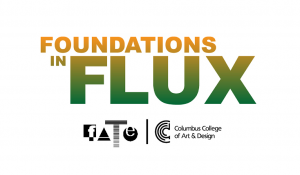 Register for FATE’s 17th Biennial Conference, “Foundations in Flux,” will be hosted by Columbus College of Art & Design in Columbus, Ohio on April 4th-6th, 2019. Registration includes Breakfast & Lunch for each day of the conference. https://www.foundations-art.org/conference
Register for FATE’s 17th Biennial Conference, “Foundations in Flux,” will be hosted by Columbus College of Art & Design in Columbus, Ohio on April 4th-6th, 2019. Registration includes Breakfast & Lunch for each day of the conference. https://www.foundations-art.org/conference
Foundations in Flux will host various workshops led by FATE members during the conference on Friday April 5th. Workshop sessions have limited numbers of seats & participants must register in advance, there are NO ADDITIONAL FEES to participate in these workshops. All workshops will be held on the campus of CCAD. All seats are on a first-come basis and some workshops will require materials to be supplied by the attendee. Please read all workshop details below before making your selection(s). For more info and to register: https://docs.google.com/forms/d/e/1FAIpQLSdKwlrpTANzrgZICqL0LzyvG8Qwc3x_yw4ABLo2z7zu3dvDUw/viewform
Positive Space is FATE’s bi-monthly podcast providing opportunities for those passionate about art foundations to discuss and promote excellence in the development and teaching of college level foundations in art & design studio and history classes. To check out the latest episode, featuring FATE President, Valerie Hanks, discussing her recent workshop about discomfort and empathy in the classroom, visit: https://www.foundations-art.org/positive-space
If you have podcast ideas, contact us! Positive Space has a phone number: 904-990-FATE. Give us a call & record a message today!
American Institute for Conservation
Please join us at the 2019 AIC Annual Meeting being held at the Mohegan Sun, located in Uncasville, CT, May 13-17. With over 1,400 attendees, the AIC Annual Meeting is the largest international conservation and collection care conference held in North America. Visit our Annual Meeting webpages to see the online schedule and learn about the nearly 200 talks and events. Some highlights of the 2019 meeting include a new Opening General Session featuring TED-style talks, hundreds of specialty talks, and engaging lunch programing.
The Mohegan Sun, centrally located in New England, offers a 4-star quality hotel experience at a low nightly rate of $139 for AIC Annual Meeting attendees. We also have a block of student rooms starting at $98 per night. Getting to the Mohegan Sun is easy. Those located between Washington DC and Boston can drive or take Amtrak. AIC is also running direct buses from New York City and Boston. For more information on our host hotel, view the accommodations pages.
The proximity to major East coast cites allows AIC to offer workshop and tours all over New England during our pre-session, May 13-14. Visit the online schedule to view our pre-session offerings.
We welcome you to register now for the 2019 AIC Annual Meeting!
Visual Resources Association (VRA)
Tools and Trends in Visual Resources
The Visual Resources Association is using a scheduled business meeting at the annual College Art Association conference to share information about some of the tools that curators are using to enhance and manage digital image collections and discuss new trends in the field of visual resources and art librarianship.
Three speakers will be presenting their work in these areas:
Cataloging at Artstor: A New Look at Tried and True (and some AI) Strategies
Lisa Gavell, Senior Manager of Image Content at Artstor
Maximizing Metadata: VRA Embedded Metadata Tools
Marcia Focht, Curator of Visual Resources at Binghamton University
Images as Research Data
Jasmine Burns, Visual Resources Metadata Librarian at Cornell University and Chair of the Upstate New York Chapter of VRA.
Please join us for provocative presentations with time for questions and discussion on Friday, February 15th, 2019, in the Morgan Suite at the New York Hilton Midtown, from 12:30 to 1:30 pm.
This event is free and open to the public, so you do not need to be a CAA member or to register for the conference to attend this business meeting. If you wish to attend regular sessions, the book and trade fair, or other CAA conference activities, you must register. Advance registration for the full conference ends on Jan 30th, 2019 (only 3 days left), but single timeslot and day passes may be purchased onsite (not available in advance).
For questions, please contact:
Maureen Burns, IMAGinED Consulting & VRA CAA Affiliate Representative
moaburns@gmail.com or 310-489-3792
SECAC
The Call for Papers for SECAC 2019 in Chattanooga is open at https://secac.secure-platform.com/a/solicitations/home/5.
SECAC 2018: 74th ANNUAL CONFERENCE
In October, SECAC met for the 74th time in Birmingham, Alabama, hosted by the University of Alabama at Birmingham. Over 120 sessions were held, and 561 members representing 284 institutions attended. In its eighth year, participation in the SECAC mentoring program remained high with 40 members meeting as mentors and mentees.
Highlights of the conference included the SECAC 2018 Annual Juried Exhibition at UAB’s Abroms-Engel Institute for Visual Arts and a keynote address at the Birmingham Museum of Andrew Freear of the Rural Studio.
At the annual business meeting SECAC President Sandra Reed of Marshall University introduced new members of the Board of Directors: Alabama, Wendy DesChene, Auburn University; Florida, Jeff Schwartz, Ringling College of Art and Design; Kentucky, Eileen Yanoviak, Carnegie Center for Art and History; Louisiana, Jill Chancey, Nicholls State Univeristy (continuing); North Carolina, Kathryn Shields, Guilford College; and At Large #3 Claire Kovacs, Augustana College.
SECAC 2019 will be hosted by the University of Tennessee at Chattanooga, October 16-19. Calls for presentations, juried exhibition entries, and award applications will be published on the SECAC submissions site at https://secac.secure-platform.com/a in early 2018.
AWARDS PRESENTED AT SECAC 2018
The SECAC Artist’s Fellowship, a $5,000 prize, was awarded to photographer Karen Graffeo, Professor of Art at the University of Montevallo, author and photojournalist Julio Larramendi, photographer and editor at Ediciones Polymita in Cuba, photographer Sonja Rieger, Professor of Photography at the University of Alabama at Birmingham, and Alabama-based photographer and filmmaker Carolyn Sherer. Their proposed exhibition, My Other Body: Trans-Culture, Transgender Cuba/Alabama, will be on view at SECAC 2019 in Chattanooga, Tennessee.
Andrew Wasserman, Visiting Assistant Professor at the University of North Carolina at Greensboro, won the 2018 Levin Award for his project Bang! We’re All Dead! The Places of Nuclear Fear in 1980s America.
The 2018 SECAC Award for Excellence in Teaching was presented to Wendy DesChene, Professor of Art at Auburn University.
The 2018 SECAC Award for Excellence in Scholarly Research and Publication was awarded to Olga U. Herrera, Director of the Washington Office of the Inter-University Program for Latino Research (IUPLR) headquartered at the University of Houston, for American Interventions and Modern Art in South America, University Press of Florida, 2017.
The 2018 SECAC Award for Outstanding Exhibition and Catalog of Historical Materials was presented to Keri Watson for In the Eyes of the Hungry: Florida’s Changing Landscape, exhibited at the UCF Art Gallery and the Terrence Gallery at the Orlando City Hall in 2017.
The 2018 SECAC Award for Outstanding Exhibition and Catalog of Contemporary Materials was given to Vesna Pavlović, Associate Professor of Art at Vanderbilt University, for the exhibition Vesna Pavlović’s Lost Art and its catalog edited by Pavlović and Morna O’Neill.
Thirty-four graduate students received Gulnar Bosch Travel Awards: Virginia Badgett, University of California, Santa Barbara; Gráinne Coughlan, Dublin Institute of Technology; Stephanie Crawford, Rutgers University; Erin Davenport, University of North Carolina at Chapel Hill; Julia Detchon, University of Texas; Parissa Farmoudehyamcheh, Georgia Southern University; Dilmar Mauricio Gamero Santos, Tyler School of Art, Temple University; Elyse D. Gerstenecker, University of Virginia; Caroline Gillaspie, The Graduate Center, CUNY; Amy Catherine Hulshoff, University of New Mexico; Manami Ishimura, Texas A&M Corpus Christi; Ally Johnson, University of Illinois at Urbana-Champaign; Tacie Jones, Virginia Tech University; Holly Kelly, University of Tennessee, Knoxville; Sharon Khalifa-Gueta, Ben Gurion University of the Negev; Patricia Lagarde, Tulane University; Mia Laufer, Washington University in St. Louis; Kimiko Matsumura, Rutgers University; Mary Mazurek, IDSVA ; Reed O’Mara, Case Western Reserve University; Ellie Perendy, Baruch College; Kathleen Pierce, Rutgers University; Catherine Popovici, The University of Texas at Austin; Ali Printz, Tyler School of Art, Temple University; Lily F. Scott, Temple University; Roberta Serra, Université Paul Valéry; Lauren Elizabeth Shea, University of Illinois at Urbana-Champaign; Jeff Siemers, IDSVA; Lauryn Smith, Case Western Reserve University; Tracy Spencer Stonestreet, Virginia Commonwealth University; Sarah Tietje-Mietz, Syracuse University; Vanessa S. Troiano, The Graduate Center, CUNY; Angela Whitlock, IDSVA; and Hayley Woodward, Tulane University.
Juror Peter Baldaia, Director of Curatorial Affairs at the Huntsville Museum of Art, selected Over There To Here (Gatlinburg), 2018, by Stacy Isenberger, University of Idaho, as Best in Show at the SECAC 2018 Annual Juried Exhibition. He also recognized five participants with Juror Awards: Joshua Brinlee, University of Mississippi, for Self-Portrait as Provider, 2017; Lily Kuonen, Jacksonville University, for Hewn, 2017;
Jessica Mongeon, Arkansas Tech University, for Drunken Trees: Permafrost Melts, Leaving Uneven Ground, 2017; Duane Paxson, Independent Artist, for Denying Dendera, 2018; and John Douglas Powers, University of Tennessee–Knoxville, for Terra Nuova, 2017.
EAHN
The EAHN wishes to draw attention to the three calls for proposals described below, all organized by EAHN’s Urban Representations Work Group, for the conference “The Global City: Urban Condition as a Pervasive Phenomenon” organized by the A.I.S.U. (Associazione Italiana di Storia Urbana) in Bologna, 11-14 September 2019.
The deadline for submitting abstracts has been extended to February 10th.
Abstracts indicating name, affiliation, email address, brief cv, and a description of the proposed topic of no more than 2000 characters should be sent both to the chairs of the session and to the conference organizers (congresso@storiaurbana.org) using the form found on the conference website http://www.storiaurbana.org/index.php/en/component/content/article/9-congressi/1131-bologna-2019-call-for-paper-uk
Session 3-5 “The Photo-book and the City”
The term ‘photo-book’ was coined in the 1920s by László Moholy-Nagy and went on to define a popular genre within 20th-century visual culture. While this genre emerged within the ‘New Vision’ of the inter-war period, it has a broader history that goes beyond the modernist avant-gardes. What role did this unique form of publication play within the history of urban representation? The aim of the session is to focus on the photo-book as an instrument for reading, analysing, and interpreting cities through a curated sequence of images. There is a long cultural and artistic history of these illustrated books, spanning from the late-19th to the early-21st century, which calls for comparative investigation. A tentative list should include celebrated examples, ranging from Alvin Langdon Coburn’s works inspired by Japanese view-making cultures (London 1909; Edinburgh 1909; New York 1910) to seminal books by Brassaï (Paris de nuit 1932), Berenice Abbott (Changing New York 1939), Horacio Coppola (Buenos Aires 1936) and William Klein (New York 1956; Rome 1959), but we are equally interested in less-known publications. Attention will also be given to by the work of photographers trained as architects who used the camera to capture specific qualities of urban space, such as Norman Carver (Italian Hilltowns 1979) and Gabriele Basilico, whose observations of cities around the world (Milan; Beirut; Berlin; Moscow; Istanbul) were the subject of carefully curated volumes. There is a history here that awaits to be written; one that is made all the more significant by the recent use of photo-books to preserve the narrative of urban campaigns stretching over decades (e.g., works by Martin Parr and Garry Badger published by Phaidon). Gradually, as with other photographic trends, this type of representation has been taken up by contemporary artists, historians, architects and urban designers for a variety of urban explorations. We encourage participants to propose case-studies as well as reflective papers focusing on photo-books across the history of photography – from its origins to the latest digital developments. Contributions that address the role of various figures involved in the production, circulation, and reception of these publications (e.g., photographers; editors; publishers; etc) are also welcome.
Chairs: Davide Deriu d.deriu@westminster.ac.uk; Angelo Maggi amaggi@iuav.it
Session 6-4 “Reading the City’s Histories Through Visual Documents”
Every city contains multitudes, presenting a collective artifact made up of innumerable places and lived narratives. Most present-day cities also overlay multitudes, covering or transforming earlier iterations of themselves. Our knowledge of those older layers, of urban landscapes since recast, quickly surrenders to the mortality of personal memory. We then come to depend heavily on the persistence of physical artifacts that capture fragments of the past city, whether through survivals and traces in the present-day built landscape or through records — textual, visual, and sometimes even three dimensional — of those largely supplanted deeper layers of the urban palimpsest.
But the city is a big and complicated artifact, and every such representation must be a purposeful distillation, begging questions of the part and the whole, and of choice. Each favors some kinds of information over others, and all demand a considered examination of the lens adopted by their creators, retrospectively framing the visual document in the context of agency, motives, models, and expected function. At the same time, even as we are conscious of such filtering frames, we want to ask what they tell us about their subject, as they offer posterity some of our best evidence of these places in time. They allow us to better see and read the built landscapes they portray as patterns of forms, as socio-economic artifacts, as settings of living and working and gathering, of entrepreneurial ambitions and communal organization, across the globe and through history.
For this session, we especially invite contributions that look to and interrogate visual documents that capture lost aspects of the city of both distant and recent history at a range of scales — from detailed surveys of common building forms to purposefully selected sets of views, from closely transcribed plans and streetscapes of whole blocks and neighborhoods to maps of larger spatial networks and depictions of a city as a whole — that offer us insights on both that city and our own vantage point, in terms of our intentions and responses, in our looking at and to it.
Contact person: Anat Falbel anatfalbel@uol.com.br
Chairs: The EAHN Interest Group “Urban Representations” (organized by group members Jeffrey Cohen, Anat Falbel, Min Kyung Lee, Nancy Stieber)
Session 6-6 “Stories We Tell: Narratives of Urban Space”
Architectural sites as tourist attractions challenge the histories and memories of the urban collective. The city beckons the potential visitor (both tourist and local alike) through the aestheticization and cultural branding that serve, particularly through pervasive mediatizations, to narrativize urban space that may be in contrast to, or stacked amongst, stories of place. This session will engage an assortment of pressing questions about the relationship of architecture to tourism and memory specifically to position concepts of demolition, preservation, heritagization and new construction within urban (geopolitically-shaped) sites, for no site is detached from place; no touristic visit can effectively be accomplished without considering — in some measure — the story of a place and the memories it holds for all those who dwell or pass through it. No guidebook is disentangled from interpretive memories and stories that contribute to how tourists come to learn about a site. Questions such as whose memories become the stories of a tourist’s encounter with a place, or how do we consider the terms heritage or heritagization within the context of placemaking and memory stories, will be discussed. Finally, what constitutes the memory or (competing) memories of a place in order for it to be preserved (and subsequently branded for a tourist economy)?
Chair: Shelley Hornstein shelleyh@yorku.ca
ATSAH
NEWS FROM ASSOCIATION FOR TEXTUAL SCHOLARSHIP IN ART HISTORY
AWARDS for Students and Scholars
In commemoration of our 30th anniversary, ATSAH plans to offer two awards: one prize for the best article by an emerging scholar (no higher than Associate level). The topic may range from classical to Pre-Raphaelite art, reflecting the aims of ATSAH. The second is a small travel grant for junior scholar presenting a paper an ATSAH session.
The board of ATSAH selects these awards.
For further data, contact:
Liana Cheney, PhD, President of ATSAH
Liana_Cheney@uml.edu
ATSAH Session at CAA 2019
Member’s publications
Special Edition in Iconocrazia Vol 13 – 2018
Art, Astronomy, Politics, and Religion
Liana De Girolami Cheney
Giorgio Vasari’s Moral Virtues in the Oratory of the Compagnia del Gesù at Cortona: Physical and Metaphysical Power
Andrzej Piotrowski
Politics, Architecture, and the Historiography of Denial in Poland
Brian D. Steele
Force Constrained: Hercules in Sixteenth-Century Venice
Charles Burroughs
The Graces and Political Order in the Renaissance Imaginary
Damiano Acciarino
Iconologia del Fato nel Rinascimento
Giangiacomo Gandolfi
Cosimo de’ Medici, Paolo Toscanelli e il Cielo dei Magi: una nuova ipotesi per gli Emisferi Celesti Fiorentini
Jennifer Bates Ehlert
Questioning the Oracle: Jacek Malczewski’s Pythia series and World War One
Lynette M.F. Bosch
Interpreting and Dating Michelangelo’s Crucified Christ for Vittoria Colonna: Fra Ambrogio Catarino Politi And St. Paul
Sarah J. Lippert
Egypt and Napoléon Displaced
Cassandra Sciortino
Armand Point’s St.Cecilia & the Painters of the Soul: Bridging Art & Life in Fin de Siècle France
Liana De Girolami Cheney
Edward Burne-Jones’s The Mirror of Venus: Physical and Intangible Female Beauty in Journal of Literature and Art Studies 9, no. 1 (January 2019):1-28.
International Association for Word and Image Studies (IAWIS)
New Publications
A selection of articles from the IAWIS Dundee conference (2014) has now been published in book form. The volume is entitled:
Art and Science in Word and Image: Exploration and Discovery, Brill/Rodopi (Word and Image Interactions, volume 9), edited by Keith Williams, Sophie Aymes, Jan Baetens and Chris Murray
It is available at https://brill.com/view/title/36202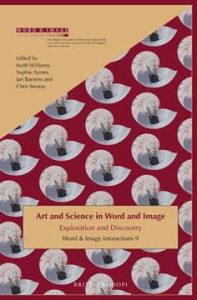
- “Photographie et théâtre”, Revue internationale de photolittérature, ed. Marianne Drugeon, Christine Kiehl, Jean-Pierre Montier et Laurence Petit, n° 2, 2018. https://www.fabula.org/actualites/revue-internationale-de-photolitterature_88524.php
- Converging Lines: Needlework in English Literature and Visual Arts edited by Rachel Dickinson & Laurence Roussillon-Constanty, Revue E-Rea, n° 16.1/2018: https://journals.openedition.org/erea/6451
- Next IAWIS Triennial Conference
CALL FOR SESSIONS Water and Sea in Word and Image, University of Luxembourg, July 5th – 10th, 2020
In an era in which water scarcity is threatening us all and the mainland is affected even in the depths of its epicenter by what is happening on its shores, it seems of great importance to propose a subject both acutely topical and strongly tied to the collective imagination. In Alessandro Baricco’s novel Ocean sea (1993), the fictional character Plasson paints the sea with seawater. This emblematic scene sums up our topic to some extent: water is difficult to grasp and yet concerns us more and more. Shapeless, still waiting to be defined, it even resists any effort of conceptualization. Putting water and the sea into words and into images is not obvious, represents a real discursive and plastic challenge and is therefore particularly likely to call into question the relationship between text and image. Due to its rhythm “without measure” (Deleuze & Guattari, 1980), water as an element transcends Lessing’s dichotomy between arts of time and arts of space (see Louvel, 2002). The water’s unspeakable nature does not coincide with its invisible essence. Yet, literary and plastic narratives constitute an actual semiosphere with, at its borders, an area where the semiotic links are violated (Lotman, 1966), the realm of the unstable, the arbitrary, the unaccountable.
Located at the heart of the European continent – however tightly interconnected with its periphery –, cradle of the siren Melusine, territory boasting its natural springs and its balneology, Luxembourg seems to be the appropriate place to host a world congress on this subject.
Abstracts for sessions should be a maximum of 300 words.
N.B.: All conference participants must be members of IAWIS/AIERTI (http://iawis.org/) and in order with their membership fee before the conference.
The deadline for SESSION PROPOSALS is February 28th, 2019. Submissions are to be dropped on our website: https://waterandsea2020.uni.lu
The selection committee will contact you before March 30th, 2019 about the outcome of your application.
POTENTIAL CONFERENCE SESSION THEMES
N.B.: The sessions consist of one or maximum two panels of 1h30 each (three papers). The panels will offer a tribune to experienced researchers in Word and Image Studies and/or young scholars (doctoral students/postdocs) whose proposals the chairs of the elected sessions will gather and select. The word and image interaction should be formulated in the title of the session. Please indicate if your session fits with one or several of the potential themes listed below (e.g.: 1, 7, 12).
- Water, a natural element (its virtues and dangers) and an esthetic challenge
- Water as energy in science and arts
- The biblical or mythical imaginary of water and sea
- Aquatic and maritime myths, rites and marine, fluvial or lacustrine folklore
- Melusine, nymphs, naiads and other sirens
- The seaside or still water in painting and literature
- Balneology, its history and actuality
- Harbours in texts and images
- Insular or peninsular cultures
- Touristic promotion of natural heritage (seaside, lakes, rivers)
- Aqueducts, thermal baths and dams in the Greater Region
- The Mediterranean Sea, the Atlantic and the Pacific Ocean (shores, fauna, cultural and market routes, migration)
- Graphic novel, comics or cartoons on sea, water or migration
- Water and sea in film, video or in digital artefacts
- The future of water in arts and media
- Water scarcity, drought and sustainable issues in word and image
- The sea as epistemological metaphor (shipwreck, raft, wave, hurricane, liquidity, archipelago, foam)
- Scientific or imaginary cartography
- Other related topics
AHNCA
The Association of Historians of Nineteenth-Century Art (AHNCA) is pleased to announce that the Sixteenth Annual Graduate Student Symposium in the History of Nineteenth-Century Art, co-sponsored by AHNCA and the Dahesh Museum of Art, will be held on Sunday, March 24, 2019 (10:00 am – 5:00 pm), at the Dahesh Museum of Art, 145 Sixth Ave., New York, NY. The Mervat Zahid Cultural Foundation has generously provided the Dahesh Museum of Art Prize of $1,000 for the best paper. Information about the speakers and brief abstracts of their papers will be available online at http://ahnca.org/index.php/symposia after February 6, 2019.
Historians of German, Scandinavian, and Central European Art and Architecture (HGSCEA)
The Board recently awarded travel stipends to two members of HGSCEA, Sara Blaylock and Lauren Hanson, to help defray the costs of their participation in CAA’s annual conference. The Board also juried this year’s HGSCEA Emerging Scholars Prize competition, the winner of which will be announced at the reception and dinner in New York. As always, the dinner, which will take place on Thursday, February 14, from 7 to 9 p.m., is free to current members. For further information, contact a member of the Board.
HGSCEA’s sponsored session at the annual CAA conference, “Women Artists in Germany, Scandinavia, and Central Europe, 1880-1960,” is being chaired by Kerry Greaves on Saturday, February 16, from 10:30 a.m. to 12:00 p.m.. Emil Leth Meilvang, Nora Butkovich, Lauren Hanson, and Lynette Roth will read papers on Rita Kernn-Larsen, women in the Young Yiddish Group, Mary Bauermeister, and Anneliese Hager. For more information, go to the HGSCEA website (http://hgscea.org/ ) and the conference website (https://caa.confex.com/caa/2019/meetingapp.cgi/Session/1607)
The annual business meeting is scheduled for Friday, February 15. It will take place in the Harlem Room on the 4th Floor of the New York Hilton Midtown from 12:30-1:30 p.m. Members are welcome to attend.
The Midwest Art History Society
The Midwest Art History Society (MAHS) would like to call your attention to its recent e-publication Monumental Troubles: Rethinking What Monuments Mean Today, searchable by its title in WorldCat. The publication records selected papers presented at the 2018 MAHS Annual Conference held in Indianapolis. The essays in this e-volume contribute to contemporary conversations about public monuments, broadly defined as commemorative objects, images, and spaces, and the responses to them, including the calls to remove, relocate, or destroy them. Contributors consider these “monumental troubles” from multiple historical, geographic and theoretical perspectives, suggesting a generative rethinking about why they were made and how their meaning changed over time.” The original conference sessions were organized by Erika Doss, University of Notre Dame and the publication effort was guided to its successful conclusion by Cheryl Snay of the Snite Museum of Art.
And please consider attending the 2019 MAHS Annual Conference to be held in Cincinnati, March 21-23. The Cincinnati Art Museum & the Taft Museum of Art are conference hosts, keynote speaker is Hollis Clayson. Conference registration includes special tours, receptions, and more. Reduced fees for early registration end on March 1. Book a room in the Hilton Netherland Plaza at a discounted rate before Feb 27. Click the link below to register online & book a room. https://www.mahsonline.org/conference/register
HNA
What: CAA session: The Female Impact: Women and the Art Market in the Early Modern Era
When: Thursday, February 14, 2019, 2:00 PM – 3:30 PM
Where: New York Hilton Midtown – 2nd Floor – Morgan Suite
CHAIRS: Judith Noorman and Frans Grijzenhout
What: HNA Reception
When: Friday, February 15, 2019, 5:30-7 pm
Where: Syracuse University Lubin House, 11 East 61st Street, New York, NY
Please RSVP to Amy Golahny, Golahny@Lycoming.edu
EPCAF
The European Postwar and Contemporary Art Forum has changed its governance structure and will now be headed by a team of co-chairs. Lily Woodruff has transitioned from her previous role as president, and is now joined by Raffaele Bedarida. Raffaele is an art historian and curator specializing in twentieth-century Italian art and politics. In particular, his research has focused on cultural diplomacy, migration, and cultural exchange between Italy and the United States. He is an Assistant Professor of Art History at Cooper Union, New York. Bedarida is the author of two monographs in Italian, Bepi Romagnoni: Il Nuovo Racconto (Milan: Silvana Editoriale, 2005) and Corrado Cagli: La pittura, l’esilio, L’America (Rome: Donzelli, 2018; English edition upcoming), and numerous articles for academic journals (International Yearbook of Futurism Studies, Oxford Art Journal, Tate Modern’s In Focus) and exhibition catalogues (MART, Rovereto; CIMA, New York; Fundacion Juan March, Madrid; Frederick Kiesler Foundation, Vienna). He holds a PhD from the Art History Department of the CUNY Graduate Center, as well as MA and BA degrees in Art History from the Università degli Studi di Siena, Italy. Bedarida is currently working on the manuscript for his book: ‘Like a Giant Screen:’ The Promotion of Contemporary Italian Art in the United States, 1935–1969.
Public Art Dialogue (PAD)
Public Art Dialogue (PAD) will present its 2019 PAD Award for achievement in the field of public art to art collective fierce pussy during next week’s conference. Please see the announcement here: https://publicartdialogue.org/news/2019-01-09/2019-pad-award-fierce-pussy
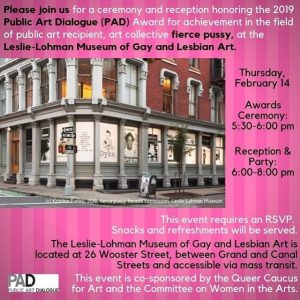
Comprehensive Appraisal Studies Program (CASP)
Now Accepting CASP Applications!
The Appraisal Institute of America, the educational foundation of the Appraisers Association of America is now accepting applications for our Comprehensive Appraisal Studies Program (CASP) for both the Summer 2019 and Fall 2019/Spring 2020 Semester.
Enroll in CASP to learn to appraise the fine and decorative arts. Completing CASP will provide you with a certificate in Appraisal Studies from the Appraisal Institute of America.
For more information and to apply, please visit our website at www.appraisersassociation.org/CASP.
Society of Architectural Historians
The Society of Architectural Historians has been awarded a two-year, $508,000 grant from The Andrew W. Mellon Foundation to study the status of the field of architectural history in higher education. The grant provides support for a data-gathering initiative that will gauge the health of architectural, urban and landscape history as fields of study, as well as degree programs and curricula across the higher education landscape. SAH plans to hire a post-doctoral researcher to design and manage the study to determine where, and in what ways, these fields of study are expanding, receding, changing, or holding steady and to consider the structural or cultural factors behind such trends. SAH also will hire a Project Coordinator to assist with the project. Visit the SAH Career Center for full job descriptions.
SAH has named architect Aymar Mariño-Maza and architectural historian Zachary J. Violette as the recipients of the 2018 H. Allen Brooks Travelling Fellowship. The fellowship allows an emerging scholar to travel the world to experience architecture and landscapes firsthand. SAH awarded Mariño-Maza a one-year fellowship and Violette a short-term fellowship for three months of travel. They will begin their fellowship travels in March 2019 and will document their field studies through monthly updates on the SAH Blog.
SAH invites nominations and self-nominations for the next Editor of the Journal of the Society of Architectural Historians. JSAH is a quarterly, blind-peer reviewed international journal devoted to all aspects of the history of the global built environment and spatial practice, including architecture, landscape architecture, urbanism, and city planning. Published since 1941, JSAH has defined the field of architectural history, and is a pioneer in digital publication. Nominations due by April 30, 2019.
Association of Print Scholars
The Association of Print Scholars is pleased to host its affiliated society panel at the College Art Association conference on Friday, February 15, 2019 in New York.
Chaired by Christina Michelon (University of Minnesota, Twin Cities), Coloring Print examines global printmaking traditions that advance our understanding of the role of the medium in the social construction of race. The papers chosen include “Red Ink: Ethnographic Prints and the Colonization of Dakota Homelands” by Annika Johnson (University of Pittsburgh); “Sites of Contest and Commemoration: The Printed Life of Richard Allen, America’s Early Race Leader” by Melanee C. Harvey (Howard University); “A Franco-Indian Album: Firmin Didot’s Indian Paintings and Le Costume Historique’s Chromolithography (1888)” by Holly Shaffer (Brown University); and “The White Native Body in Asia: Woodcut Engraving and the Creation of Ainu Stereotypes” by Christina M. Spiker (St. Catherine University).
Aaron M. Hyman and Dana Leibsohn have been awarded the Association of Print Scholars 2018 Publication Grant to support the forthcoming publication related to their project “Washing the Archive: Indigenous Knowledge, European Prints, and Colonial Histories of Latin America.”
The co-authored project focuses on the circulation of prints in colonial Latin America, highlighting unpublished documents and the methodological provocations indigenous practices can offer traditional early modern print histories. The funding supplied by the grant will provide both authors the opportunity to travel to the Library of Congress and to the University of Virginia to complete their study of indigenous uses of European prints in Spanish America, especially practices of re-use, circulation, and loss under colonial conditions. The $2,000 award is funded by the Association of Print Scholars and through the generosity of C.G. Boerner and Harris Schrank. We thank both print dealers for their support of APS and its mission.
SOCIETY OF HISTORIANS OF EASTERN EUROPEAN, EURASIAN, AND RUSSIAN ART AND ARCHITECTURE (SHERA)
The following members were elected to the SHERA Board: Kristin Romberg (Vice President/President Elect); Corina Apostol (Web News Editor); and, Anna P. Sokolina (SHERA-SAH Liaison). Karen Kettering now serves as President, Alice Isabella Sullivan as Secretary-Treasurer, and Yelena Kalinsky as Listserv Administrator.
Aglaya K. Glebova (UC-Irvine) has been awarded the SHERA Emerging Scholar Prize for her essay “Elements of Photography: Avant-garde Aesthetics and the Reforging of Nature” (Representations 142, Spring 2018). Ekaterina Heath (University of Sydney) was selected as the recipient of the SHERA Travel Grant for CAA 2019 to will deliver her paper entitled “Picturing the Cathay in Russia: Political use of Chinoiserie interiors under Empress Elisabeth Petrovna and Emperor Peter III.”
The generous anonymous donor who has funded the SHERA Travel Grant has increased their support to allow for more grants and to enlarge the pool of eligible applicants. The award was initially given out once per year, for travel to CAA and ASEEES conferences in alternate years and was limited to graduate students. Going forward, the Travel Grant will be awarded twice per year for travel to both CAA and ASEEES. Additionally, independent scholars who receive no institutional support are now eligible to apply. US-based scholars will receive $1,000 and scholars traveling from outside the US will receive $1,500. Calls for applications are published on H-SHERA and on CAA Opportunities.
SHERA’s Board would like to continue developing online resources for scholars and teachers in our field using the H-SHERA platform, including book reviews, sample syllabi, up-to-date contact information for obtaining image permissions, conference reports, information about graduate programs, or other resources. If you have ideas or would like to volunteer to help with this effort, please write to the H-SHERA editors at editorial-shera@mail.h-net.org.
Association of Art Museum Curators (AAMC) & AAMC Foundation
Association of Art Museum Curators (AAMC) & AAMC Foundation is currently accepting applications for its Conference Travel Fellowships for curators to attend its Annual Conference and Meeting. Since 2010 alone, over 200 individual Curatorial Travel Fellowships have been awarded.
This year we are proud to offer two opportunities:
- Conference Travel Fellowship for Junior Curators. Open to junior curators with less than ten years of experience. Funding generously provided by the Samuel H. Kress Foundation.
- Art Fund / AAMC Conference Travel Fellowship. Open to UK curators to travel, network and develop relationships with their international peers. These Fellowships are a collaboration between Art Fund and AAMC Foundation.
All applicants must commit to participating in the full Conference program (May 4-7, 2019 in New York City) at the time of application, including the all deadlines (non-negotiable), timelines, and travel. A stipend is granted as part of this Program to subsidize the travel requirements. Multiple curators from one museum are eligible, though individuals may only submit one application per year.
Each Fellowship has a separate application, and members may apply to one Fellowship only. Applications for both of these AAMC Foundation Conference Travel Fellowships are due via our online application portal by 12pm ET on Tuesday, February 12, 2019.
To view the full program benefits, eligibility, and the link to the applications, please visit:
https://www.artcurators.org/page/TravelGrants
—-
Association of Art Museum Curators (AAMC) Foundation is pleased to announce Digital & Outward Engagement, the next installment in its regional In-Conversation series. Launched in 2016, AAMC Foundation’s In-Conversation series brings together local communities and expands networks.
Slated for Tuesday, February 26 at the Philadelphia Museum of Art, In-Conversation: Digital & Outward Engagement features six perspectives on building bridges between museums and their audiences through the use of ever-evolving technologies and digital tools. Moving past social media and traditional websites, this event brings together Philadelphia’s leading voices to dig deeper into the ways in which technology can help advance dialogues with visitors, donors, colleagues, and the larger global community. They will touch on the current efforts and platforms in the digital sector, and consider ways in which they could be used to help better connect with audiences. With a look at the topic from varying perspectives, we’ll also have the opportunity to reflect on ways to collaborate as well.
Moderated by Christopher D.M. Atkins, Ph.D, Agnes & Jack Mulroney Associate Curator of European Painting & Sculpture and Manager, Curatorial Digital Programs & Initiatives, Philadelphia Museum of Art, this program features Aaron Miller, Senior Producer, Digital Media, The Franklin Institute; William Noel, Associate University Librarian & Director, Kislak Center for Special Collections, Rare Books and Manuscripts Director, Schoenberg Institute for Manuscript Studies, Penn Libraries; Amy Sadao, Daniel W. Dietrich, II Director, Institute of Contemporary Art, University of Pennsylvania; Ariel Schwartz, Kathy and Ted Fernberger Associate Director of Interactive Technologies, Philadelphia Museum of Art; and Neville Vakharia, Program Director, Arts Administration Campus Program and Associate Professor and Research Director, Drexel University, Westphal College of Media Arts & Design.
This In-Conversation will be hosted at the Lecture Auditorium at the Philadelphia Museum of Art’s Perelman Building on Tuesday, February 26, 2019 from 6:30pm – 8:00pm, followed by a short reception from 8:00pm – 8:30pm. Space is limited so pre-registration is required. Click here to reserve your seat!
ACASA – Arts Council of the African Studies Association
- ACASA welcomes new board members:
Peri Klemm, President
Peju Layiwola, President Elect/VP
Shannen Hill, Past President
Raphael Chikukwa, Secretary
Rachel Kabukala, Treasurer
Fiona Siegenthaler, Newsletter Editor
Erica Jones, Assistant Website Editor
Cynthia Becker, ASA Liaison
Olubukola Gbadegesin, CAA Liaison
El Hadji Malick Ndiaye
In office since 2017:
Nadine Siegert, Website Editor & ECAS Liaison
Brenda Schmahmann, Facebook Manager
Anitra Nettleton, ASA Task Force for the Protection of Academic Freedom
Shadreck Chirikure
We thank our outgoing board members Silvia Forni, Jordan Fenton, Yaëlle Biro, Cécile Fromont, Liese Van der Watt, Deborah Stokes, Leslie Rabine and Cory Grundlach for their great work and wish them all the best for the future!
- Africa, Technology, and Visual Cultures: ACASA sponsored panel at the 107th CAA Annual Conference, NYC, February 14, 2019, 8.30-10.00am
Join us at the ACASA sponsored panel Africa, Technology, and Visual Cultures chaired by Amanda Kay Gilvin with paper contributions by Suzanne Preston Blier, Stephen Adéyemí Folárànmí, Kate Ellen Cowcher and Fiona Siegenthaler.
https://caa.confex.com/caa/
- Behind-the-Scenes at the Brooklyn Museum during 107th CAA Annual Conference, NYC February 15, 2019, 10.15am- 12.00pm
Join Kristen Windmuller-Luna, Sills Family Consulting Curator of African Arts, for a behind-the-scenes tour of the new exhibition One: Egúngún. Featuring a Yoruba (Nigerian) masquerade costume composed of over 300 African, Asian, and European textiles, the exhibition uses new research and multiple perspectives to emphasize the global connections and contemporary contexts of African masquerades. Information about the exhibition: http://brooklynmuseum.org
Limited space: RSVP at bkm.nyc/caa2019acasa
H-AfrArts is looking for Editors and Advisory Board Members to join the team and share duties and responsabilities on a voluntary basis.
The Editor role involves moderating discussion posts and general CfPs. There is also an exciting opportunity (optional) to develop new content based on your interest and initiative, such as developing Teaching and Research Resources, Conference Reports, and Cross-Network Projects. A minimum of one year committment is required for this role. For a full description of the duties of Editors please consult: https://networks.h-net.org/node/905/pages/80264/becoming-editor
The Advisory Board Members assist with the general development and welfare of the Network and advise Editors in cases in which there are disputes with the members (such as when a post is rejected and a subscriber appeals). A minimum of two years commitment is required for this role. To find out more, please visit: https://networks.h-net.org/h-net-advisory-board-members
About the Network:
H-AfrArts is an international network jointly sponsored by H-Net (Humanities Online) and ACASA (Arts Council of the African Studies Association-USA) to provide a forum for the discussion and exploration of African art and expressive culture. There are a number of reasons and benefits for joining H-AfrArts Network, these include:
Collaboration: Volunteering with an H-Net Network can be an excellent opportunity to work within a multi-disciplinary and committed editorial team.
Engagement: H-AfrArts Network provides an excellent opportunity to engage with, support, and develop your field of study.
Best Practice: H-Net is committed to supporting editorial best practices. You will receive comprehensive H-Commons online training to moderate and safeguard the content of the network.
Support: H-Net has a Home Office staffed by trained historians, an online training program, a Help Desk, and a separate space where its Editors can discuss questions and concerns relating to academic best practices and project development.
Durability: H-Net is committed to the long-term digital preservation of its academic content.
Visibility: H-Net’s content is available online for free and uses an email notification system to deliver academic content directly to subscribers.
How to Apply:
Applicants must demonstrate expertise in African Arts and have regular and reliable access to email.
If you are interested, please send your CV and a covering letter by email to: editorial-afrarts@mail.h-net.msu.edu
For any questions or help please contact: Helena Cantone – Advisory Board yenacanta@gmail.com
Applications will be accepted until the positions are filled.
This is a voluntary position: The H-Net is a non-profit organization run by academics and built around a committed community of volunteers.
- Call for Applications: AFRICAN CRITICAL INQUIRY PROGRAMME: IVAN KARP DOCTORAL RESEARCH AWARDS FOR AFRICAN STUDENTS ENROLLED IN SOUTH AFRICAN Ph.D. PROGRAMMES
Closing Date: Wednesday 1 May 2019
The African Critical Inquiry Programme is pleased to announce the 2019 Ivan Karp Doctoral Research Awards to support African doctoral students in the humanities and humanistic social sciences who are enrolled at South African universities and conducting dissertation research on relevant topics. Grant amounts vary depending on research plans, with a maximum award of ZAR 40,000.
The African Critical Inquiry Programme (ACIP) seeks to advance inquiry and debate about the roles and practice of public culture, public cultural institutions and public scholarship in shaping identities and society in Africa. The Ivan Karp Doctoral Research Awards are open to African postgraduate students (regardless of citizenship) in the humanities and humanistic social sciences. Applicants must be currently registered in a Ph.D. programme in a South African university and be working on topics related to ACIP’s focus. Awards will support doctoral research projects focused on topics such as institutions of public culture, particular aspects of museums and exhibitions, forms and practices of public scholarship, culture and communication, and the theories, histories and systems of thought that shape and illuminate public culture and public scholarship. Awards are open to proposals working with a range of methodologies in the humanities and humanistic social sciences, including research in archives and collections, fieldwork, interviews, surveys, and quantitative data collection. For full information about this opportunity and how to apply, see the full Call for Proposals listed under “ACIP Opportunities” on the website: http://www.gs.emory.edu/about/special/acip.html.
- Call for proposals to organize a workshop: AFRICAN CRITICAL INQUIRY PROGRAMME Closing Date: Wednesday 1 May 2019
The African Critical Inquiry Programme invites proposals from scholars and/or practitioners in public cultural institutions in South Africa to organise a workshop to take place in 2020. The African Critical Inquiry Programme (ACIP) seeks to advance inquiry and debate about the roles and practice of public culture, public cultural institutions and public scholarship in shaping identities and society in Africa.
ACIP Workshops are intended as annual occasions to identify and address critical themes, fundamental questions and pressing practical issues concerning public culture. For instance, Workshops might focus on particular notions and issues related to publics, visuality, museums and exhibitions, art, performance, representational forms, or institutional forms from different methodological, practical, and theoretical vantages. They might examine forms and practices of public scholarship and the theories, histories and systems of thought that shape and illuminate public culture and public scholarship. Workshops should encourage comparative, interdisciplinary, and cross-institutional interchange and reflection that brings into conversation public scholarship in Africa, creative cultural production, and critical theory. Workshop budgets will vary depending on proposed plans; the maximum award is ZAR 60,000.
Applications may be submitted by experienced scholars and cultural practitioners based in universities, museums, and other cultural organizations in South Africa who are interested in creating or reinvigorating interdisciplinary, cross-institutional engagement and understanding and who are committed to training the next generations of scholar-practitioners. Applications may be submitted by a single individual or a pair of individuals who have different institutional affiliations and bring different perspectives, approaches, or specializations to the proposed Workshop theme.
For full information about this opportunity and how to apply, see the full Call for Proposals listed under “ACIP Opportunities” on our website. A list of previously supported ACIP Workshops is also available there: http://www.gs.emory.edu/about/special/acip.html.
CAA Announces 2019 CAA-Getty International Program Participants
posted by CAA — Nov 02, 2018
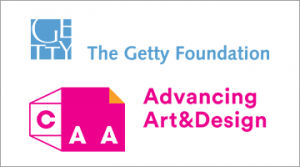
CAA is pleased to announce this year’s participants in the CAA-Getty International Program. Now in its eighth year, this international program supported by the Getty Foundation will bring fifteen new participants and five alumni to the 2019 Annual Conference in New York City. The participants—professors of art history, curators, and artists who teach art history—hail from countries throughout the world, expanding CAA’s growing international membership and contributing to an increasingly diverse community of scholars and ideas. Selected by a jury of CAA members from a highly competitive group of applicants, participants will receive funding for travel expenses, hotel accommodations, conference registration, CAA membership, and per diems for out-of-pocket expenditures.
At a one-day preconference colloquium, to be held this year at Parsons School of Design, the fifteen new participants will discuss key issues in the international study of art history together with five CAA-Getty alumni and several CAA members from the United States, who also will serve as hosts throughout the conference. The preconference program will delve deeper into subjects discussed during last year’s program, including such topics as postcolonial and Eurocentric legacies, interdisciplinary and transnational methodologies, and the intersection of politics and art history.
This is the second year that the program includes five alumni, who provide an intellectual link between previous convenings of the international program and this year’s events. They also serve as liaisons between CAA and the growing community of CAA-Getty alumni. In addition to serving as moderators for the preconference colloquium, the five alumni will present a new Global Conversation during the 2019 conference titled Creative Pedagogy: Mapping In-between Spaces Across Cultures.
The goal of the CAA-Getty International Program is to increase international participation in the organization’s activities, thereby expanding international networks and the exchange of ideas both during and after the conference. CAA currently includes members from over 50 countries around the world. We look forward to welcoming the following participants at the next Annual Conference in New York City.
2019 PARTICIPANTS IN THE CAA-GETTY INTERNATIONAL PROGRAM
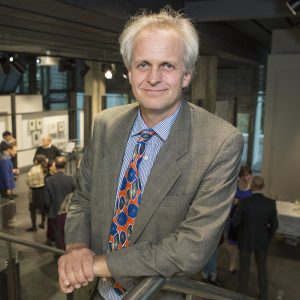
Richard Bullen is associate professor of art history at the University of Canterbury, New Zealand. He graduated with a PhD from the University of Otago in 2003. Bullen’s principal areas of research are Japanese aesthetics and East Asian art collections in New Zealand. During his years living in Japan, he studied tea ceremony and calligraphy and has since published on aspects of tea ceremony aesthetics. With James Beattie he recently completed a major publicly-funded project to document New Zealand’s largest collection of Chinese art, the Rewi Alley Collection at Canterbury Museum. Their website catalogues all 1400 objects in the collection: http://www.rewialleyart.nz. Together, they also have produced a number of publications, including New China Eyewitness: Roger Duff, Rewi Alley and the Art of Museum Diplomacy (2017) and co-curated three exhibitions. Bullen is currently working on art made in World War II by Japanese POWs held in Australasia.
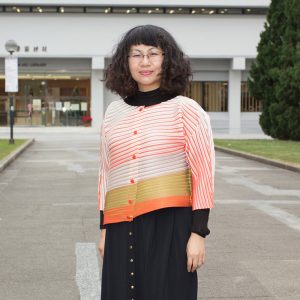
Pedith Chan is an assistant professor of Cultural Management in the Faculty of Arts at the Chinese University of Hong Kong. She received her PhD in Art and Archaeology from SOAS, University of London. Before joining the Chinese University of Hong Kong Chan was an assistant curator at the Hong Kong Museum of Art, and an assistant professor at the City University of Hong Kong. Her research interests focus on the production and consumption of art and cultural heritage in modern and contemporary China. Recent publications include The Making of a Modern Art World: Institutionalization and Legitimization of Guohua in Republican Shanghai (Leiden: Brill, 2017), “Representation of Chinese Civilization: Exhibiting Chinese Art in Republican China,” in The Future of Museum and Gallery Design (London: Routledge, 2018), and “In Search of the Southeast: Tourism, Nationalism, Scenic Landscape in Republican China,” (Twentieth-Century China, 2018). She is currently researching the making of scenic sites in modern China.

Swati Chemburkar is an architectural historian who lectures and directs a diploma course on Southeast Asian Art and Architecture at Jnanapravaha, a center for the arts in Mumbai, India. In addition, she is a visiting lecturer at the School of Oriental and African Studies (SOAS), London, and SOAS’s summer schools in Southeast Asian countries. Chemburkar’s work focuses on eighth- through twelfth-century Southeast Asia, particularly the relationship between texts, rituals, art, architecture, and cross-cultural exchanges in maritime Asia. Her ongoing research explores the spread of the ancient Śaiva sect of Pāśupatas in this region. She has edited Art of Cambodia: Interactions with India (Marg Magazine, Volume 67 Number 2, December 2015-March 2016) and contributed papers to several journals and publications, including the recent “Visualising the Buddhist Mandala: Kesariya, Borobudur and Tabo” in India and Southeast Asia: Cultural Discourse (K. R. Cama Oriental Institute, Mumbai, 2017) and “Pāśupata Sect in Ancient Cambodia and Champa” (co-authored with Shivani Kapoor) in Vibrancy in Stone: Masterpieces of the Đà Nẵng Museum of Cham Sculpture (River Books, 2017).
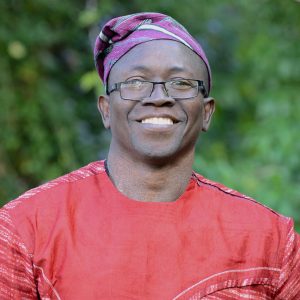
Stephen Fọlárànmí is a senior lecturer in the Department of Fine & Applied Arts, Ọbáfémi Awólọ́wọ̀ University, Ilé-Ifè, Nigeria. His research focuses on Yoruba art and African mural art and architecture. In particular, Fọlárànmí’s extensive research on the art and architecture of the Òyó and Iléṣà palaces has been published in journals, conference proceedings, and as book chapters. A recent example, “Palace Courtyards in Iléṣà: A Melting Point ofTraditional Yorùbá Architecture,” co-authored with Adémúlẹ̀yá, B.A., was published in Yoruba Studies Review 2, no. 2 (Spring 2018): 51-76. Fọlárànmí was a recipient of the first Höffmann-Dozentur für Interkulturelle Kompetenz at University of Vechta, Germany (2008-09). As an artist Fọlárànmí has exhibited his work in Nigeria, London, Germany, and the United States. He was the chair of the Department of Fine and Applied Arts, Obafemi Awólọ́wọ̀ University, Ile-Ife, between August 2016 and January 2018. Currently, he is a research fellow in the Fine Arts Department, Rhodes University, Grahamstown, South Africa.
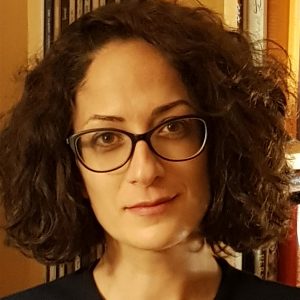
Negar Habibi is a Persian art historian and lecturer in Islamic art history at the University of Geneva, Switzerland, where she teaches history of Persian painting from early Islamic times until the modern era. She completed a PhD in 2014 in art history at the Aix-Marseille University in France with a dissertation titled “The Farangi sāzi and Paintings of Ali Qoli Jebādār: an Artistic Syncretism under Shah Soleymān (1666-1694).” Habibi conducts research on paintings from early modern Iran. Adopting a multidisciplinary approach, her work focuses on the career and life of the artist, especially issues of signature authenticity, gender, and artistic patronage in early modern Iranian society. She has published several articles on the art and artists of late-seventeenth-century Iran, and her book titled Ali Qoli Jebādār et l’occidentalisme safavide: une étude sur les peintures dites farangi sāzi, leurs milieux et commanditaires sous Shah Soleimān (1666-94) was published in January 2018 by Brill.
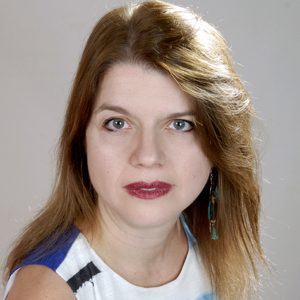
Iro Katsaridou has been the curator of modern and contemporary art at the Museum of Byzantine Culture in Thessaloniki, Greece since 2005. She studied art history at the Aristotle University of Thessaloniki and the Université Paris I-Sorbonne, and also pursued museum studies at the City University of New York. Her doctoral dissertation (Aristotle University, 2010) focused on contemporary Greek photography from 1970-2000. For the past five years Katsaridou has been researching historical photography in Greece, seeking to unravel the role of politics in the formation of photographic representations. In this particular field she also has curated exhibitions of photography and art in wartime (World War I and II) and edited related catalogues. She has co-edited a book about photography during the Nazi Occupation of Greece (1941-1944) and written articles and book chapters on photography (both historical and contemporary), exhibition display policies, as well as the relationship between contemporary Greek art and politics.

Halyna Kohut is an associate professor in the Faculty of Culture and Arts at the Ivan Franko National University of Lviv, Ukraine, where she teaches history of art, contemporary art, and history of theatrical costume. Originally educated as a textile artist, she received a PhD from the Lviv National Academy of Arts with a dissertation on seventeenth- and eighteenth-century Ukrainian kilims. She is the recipient of scholarships and grants from the Austrian Agency for International Mobility and Cooperation in Education, Science and Research, the Canadian Institute of Ukrainian Studies at the University of Alberta, and the Queen Jadwiga Foundation at the Jagiellonian University in Cracow. Kohut studies Ukrainian kilims as an intermediate zone between Oriental and Western design traditions formed on the so-called Great cultural frontier between the Christian West and Islamic East. She is especially interested in the migration of ornamental patterns as well as the articulation of textile’s social and political meanings in the historical context.
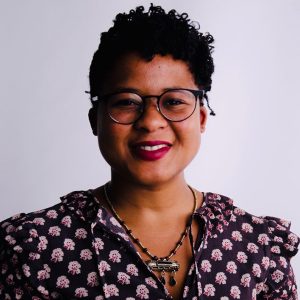
Zamansele Nsele is an art historian and a lecturer in design studies in the Faculty of Art, Design and Architecture at the University of Johannesburg, South Africa. She recently submitted her doctoral thesis in Art History & Visual Culture, titled Post-Apartheid Nostalgia and the Future of the Black Visual Archive. In 2018, Nsele was included in the Mail & Guardian’s prestigious list of Top 200 Young South Africans. She has presented her PhD research at Vanderbilt University and Rutgers University (USA), the University of East Anglia (UK), the University of Ghana in Accra (Ghana), and Rhodes University and the University of Cape Town (South Africa). In July 2018, she was a guest speaker at the Museum Conversations Conference hosted by the University of Namibia and the Goethe-Institut Namibia. Her research interests include post-Apartheid nostalgias, contemporary African art, blackface minstrelsy in South African visual culture and Africana studies.
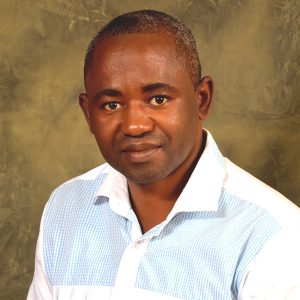
Chukwuemeka Nwigwe is a Nigerian artist and art historian who teaches fashion/textile design and art history at the University of Nigeria Nsukka. He holds a PhD in art history, MFA in textile design, and BA in fine and applied arts from the same university. Nwigwe’s current research is on identity, exemplified in two recent publications: “Fashioning Terror: The Boko Haram Dress Code and the Politics of Identity” (Journal of Fashion Theory, January 2018) and “Breaking the Code: Interrogating Female Cross Dressing in Southeastern Nigeria” (posted online as part of a 2018 ACLS African Humanities Program Postdoctoral Fellowship). Nwigwe also practices as a studio artist. His recent studio experiments with waste plastic, synthetic bags, and foil wrappers, usually woven arbitrarily, have been influenced largely by his research on bird nests begun during his MFA studies.
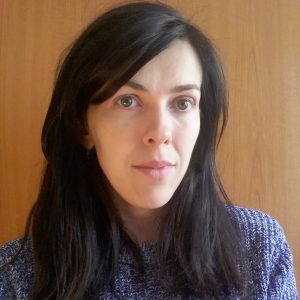
Oana Maria Nicuță Nae is an assistant professor in the Department of Art History and Theory, Faculty of Visual Arts and Design, George Enescu National University of Arts, Iasi, Romania. She received a PhD in art history from the same university, where she currently teaches courses on the history of modern European art, the history of design, and art and society in modern Europe. Most recently she published “The Materialization of Light in the Art of the (Neo-) Avant-Gardes,” in Objects and Their Traces: Historical Gazes, Anthropological Narratives, Cristina Bogdan, Silvia Marin Barutcieff (coord.), Bucharest University Press (Bucharest, 2018). Nicuță Nae’s current research focuses on the representation of women in Romanian modern art. She also studies multiple modernities, taking into account the particular position of Romanian art narratives in regional and global attempts to construct encompassing ones. Recently she has started parallel research on the notion of influence in nineteenth-century Romanian and European art.
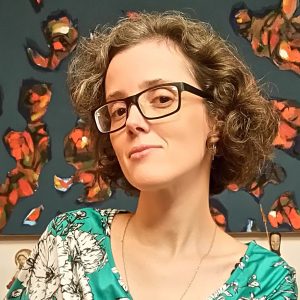
Tamara Quírico is an associate professor in the Art Institute of the Universidade do Estado do Rio de Janeiro (State University of Rio de Janeiro, UERJ, Brazil), where she teaches courses to undergraduate students majoring in art history and visual arts and art history courses to graduate students pursuing MA and PhD degrees. She earned her PhD in social history from the Universidade Federal do Rio de Janeiro, in a joint supervision program with the Università di Pisa (Italy), in which she studied changes in the iconography of the Last Judgment in fourteenth-century Tuscan painting. Her dissertation, “Inferno and Paradiso: Representations of the Last Judgment in Fourteenth-Century Tuscan Painting,” was published in Portuguese in 2014. Quírico studies Italian paintings from the thirteenth and fifteenth centuries, focusing in particular on the uses and functions of Christian images, as well as devotional practices and exchanges between Christian images from Europe and Spanish America.

Juliana Ribeiro da Silva Bevilacqua is a specialist in African and Afro-Brazilian art. She studied at the University of São Paulo, where her PhD dissertation was on the Museu do Dundo in Angola (1936–61). From 2004–14 she worked as a researcher at the Museu Afro Brasil in São Paulo. She collaborates with different museums in Brazil researching African art and Afro-Brazilian art collections, including the Museu de Arte de São Paulo and the Museu de Arqueologia e Etnologia at the University of São Paulo. In 2015 she was a guest editor of Critical Interventions: Journal of African Art History and Visual Culture in an issue dedicated to Afro-Brazilian Art. Since 2017 she has been a professor collaborating with the graduate program in Art History at the University of Campinas (Unicamp). Recently she was a visiting professor at the Universidad de Los Andes, Bogota, Colombia, in the Connecting Art Histories program sponsored by the Getty Foundation.
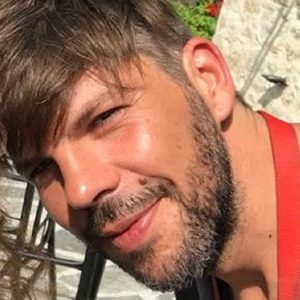
Marko Stamenkovic, born in the former Yugoslavia, is an associate curator of ZETA Contemporary Art Center in Tirana, Albania. He is an art historian and transcultural theorist with a strong interest in the decolonial politics of race, ethnicity, and sexuality. Over the past decade, he has been working primarily in the field of contemporary visual arts as a freelance curator, critic, and writer focused on the intersection of visual thinking and social theories, political philosophies, and cultural practices of the marginalized and the oppressed. He holds a PhD in philosophy from Ghent University (Belgium) where he worked on questions of sacrifice, self-sacrifice in protest, and suicide to explore the relationship between human mortality and politico-economic powers on the darker side of democracy, from a perspective of the global South. He is a member of AICA (International Association of Art Critics) and IKT (International Association of Curators of Contemporary Art).
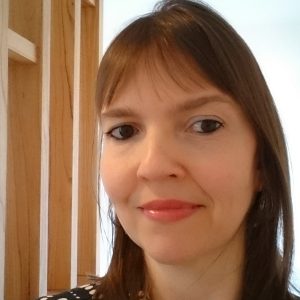
Viviana Usubiaga holds a PhD in art history from the Universidad de Buenos Aires (UBA) in Argentina. She is an associate professor of contemporary art at the Universidad Nacional de San Martín and an assistant professor of modern and contemporary art history at UBA. Usubiaga is also an adjunct researcher of the Consejo Nacional de Investigaciones Científicas y Técnicas (CONICET) and a board member of the Centro Argentino de Investigadores de Arte (CAIA). Her fields of interest include visual arts, literature, and museum studies, focusing on the political impact of transnational circulation of artistic images and texts during socially traumatic periods, including dictatorships and post-dictatorships in South America. Being a specialist in resistance art practices and institutional cultural politics, Usubiaga is the author of Imágenes inestables. Artes visuales, dictadura y democracia en Buenos Aires (2012). She also organizes independent curatorial projects in which she experiments with using scholarly methodologies in non-academic or non-specialist settings.

Jian Zhang was born in Hangzhou, China, and earned his PhD in art theory and history from the China Academy of Art, Hangzhou. He is a professor of art history at the School of Art and Humanities as well as the chief librarian of the Academy Library at the same university. His present research focuses on expressionism (formalism) in modern art historiography as well as the problem of its modernity. He is the author of Life of the Visual Form of Art, The History of the Western Modern Art, and An Alternative Story: Expressionism in the Western Modern Art Historiography, and also the translator of the Chinese edition of Wilhelm Worringer’s Form in Gothic, Heinrich Wolfflin’s The Sense of Form in Art: A Comparative Psychological Study (Italien und das deutsche Formgefühl) and Conrad Fiedler’s On Judging Works of Visual Art.
PARTICIPATING ALUMNI

Sarena Abdullah is a senior lecturer in the School of the Arts at the Universiti Sains Malaysia in Penang, where she teaches art history to undergraduate and graduate students. She received an MA in art history from the University at Buffalo, State University of New York, and a PhD in art history from the University of Sydney in Australia. Specializing in contemporary Malaysian art with a broader interest in Southeast Asian art, Abdullah was the inaugural recipient of the London, Asia Research award given by Paul Mellon Center (London) and Asia Art Archive (Hong Kong). Her book Malaysian Art since the 1990s: Postmodern Situation was published in 2018, as was Ambitious Alignments: New Histories of Southeast Asian Art, for which she was a co-editor, published by the Power Institute and National Gallery Singapore. She first participated in the CAA-Getty International Program in 2016 and presented a paper as part of the program’s reunion during the 2017 conference.
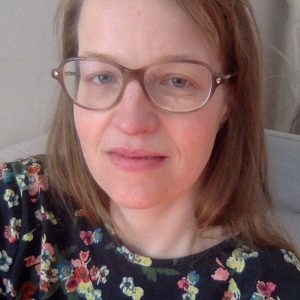
Katarzyna Cytlak is a Polish art historian based in Buenos Aires, Argentina, whose research focuses on Central European and Latin American artistic creations in the second half of the twentieth century. She studies conceptual art, radical and utopian architecture, socially engaged art, and art theory in relation to post-socialist countries from a transmodern and transnational perspective. In 2012, she received a PhD from the University Paris 1 Panthéon-Sorbonne, France. Cytlak was a postdoctoral fellow at the CONICET – National Scientific and Technical Research Council, Argentina (2015-2017). She is currently working as a researcher and professor at the Center for Slavic and Chinese Studies, University of San Martín, Argentina. Selected publications include articles in Umění/Art, Eadem Utraque Europa, Third Text, and the RIHA Journal. Cytlak is a grantee of the University Paris 4 Sorbonne (Paris), the Terra Foundation for American Art (Chicago, Paris) and the Institut National d’Histoire de l’Art (INHA, Paris). In 2018, she participated in the CAA-Getty International Program.

Nadhra Khan is a specialist in the history of art and architecture of the Punjab from the sixteenth to the early twentieth century. She received a PhD from the University College of Art & Design, University of the Punjab, Lahore, and teaches art history at Lahore University of Management Sciences, Lahore, Pakistan. Khan’s research focuses on the visual and material culture of the Punjab region during the Mughal, Sikh, and colonial periods. Her publications address several misconceptions and misrepresentations of Mughal and Sikh art and architecture as well as the state of art and craft in the Punjab under the British Raj and reflect the wide range of her interests and expertise.

Nazar Kozak is a senior research scholar in the Department of Art Studies in the Ethnology Institute at the National Academy of Sciences of Ukraine. Previously he also taught the history of art at the Ivan Franko National University of Lviv. Kozak has received scholarships and grants from the Fulbright Scholar Program, State Scholarships Foundation of Greece, the American Council of Learned Societies, the Austrian Agency for International Mobility, and the Shevchenko Scientific Society in the United States. Kozak’s primary research is on Byzantine and post-Byzantine art in Eastern Europe. He is the author of Obraz i vlada: Kniazhi portrety u mystetstvi Kyïvskoï Rusi XI stolittia (Image and authority: Royal portraits in the art of Kyivan Rus’ of the eleventh century, Lviv, 2007). More recently, he has begun to work on contemporary activist art. His article on the art interventions during the Ukrainian Maidan revolution was published in the Spring 2017 issue of the Art Journal; it received an honorable mention as a finalist for that year’s Art Journal Award. Kozak participated in the CAA-Getty International Program in 2015 and presented a paper as part of the program’s reunion during the 2017 conference.
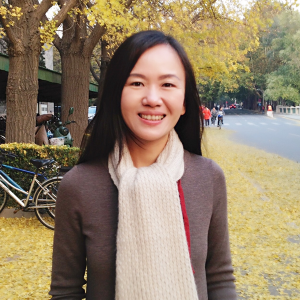
Chen Liu teaches art history and architecture at Tsinghua University in Beijing, China, where she received a bachelor’s degree in architecture with honors. After receiving a master’s in architecture and urban planning from the University of Maryland in 2000, she practiced as an architect in Washington DC until 2005. In 2011, she received a PhD in art history from Princeton University, specializing in Renaissance and Baroque art and architecture. In 2012, funded by an Andrew W. Mellow Fellowship, she helped create and direct the first Villa I Tatti summer research seminar designed specifically for Chinese scholars. “The Unity of the Arts in Renaissance Italy” provided participants with the opportunity to study firsthand the art and architecture of Renaissance Italy. Liu also teaches courses on the visual arts at Beijing Film Academy and Tongji University (Shanghai). She publishes widely on early modern art and architecture, as well as on the response of Chinese scholars to the Italian Renaissance. For the academic year 2018-2019 Liu is a Harvard-Yenching Institute Visiting Scholar at Harvard University.
CWA Picks for November 2018
posted by CAA — Nov 01, 2018
CAA’s Committee on Women in the Arts selects the best in feminist art and scholarship to share with CAA members on a monthly basis. See the picks for November below.
TAMMIE RUBIN: Solo Exhibition
November 17, 2018 – January 10, 2019
Women and Their Work (Austin)
Tammie Rubin’s handcrafted objects depict explorations of African American migration stories, particularly her own parents in the 1950s and 1960s, from the rural South to the Midwest. Timely in their haunting aura, the objects made of lab glass and sculptural material are made from found objects, appropriating familiar shapes like funnels, eggs, vases, candle holders, and, notably, cones. The artist then paints a series of 17-26 and intricately hand-etches a flask to emit a visual timeline of her parent’s journey, when the Civil Rights Movement was prominent and the Civil Rights Act was effective in 1960. Many of the objects are flanked with two holes that resemble eye holes, further indicating racial tension, unfortunately relevant still. Other elaborate adornments on the objects include pointillated maps or trails, lines and patterns. Grouped together the works release the nature of such moves; discomfort, uncertainty, but also auras of surreal and sensuality. This is a new body of work shown at the Women and Their Work Gallery in Austin, where Rubin currently resides, being raised in the Midwest.
Self-Confessed! The Inappropriately Intimate Comics of Alison Bechdel
September 1 – December 30, 2018
Zimmerli Art Museum, Rutgers
Zimmerli Art Museum exhibits MacArthur Foundation “genius” grantee and author/illustrator of the renowned Dykes to Watch Out For comic (1983-2008, syndicated in over fifty alternative newspapers), Alison Bechdel’s primary bodies of work including original drawings and sketches, activist ephemera, large-scale self-portraits, and even a reconstructed model of the set for the musical Fun Home. Fun Home: A Family Tragicomic (2006) is a graphic memoir Bechdel created exploring her relationship with her father, coming out, and his possible suicide. This New York Times bestseller was also the basis of the Tony-award winning musical of the same name from which the Fun Home model set was made. Dykes to Watch Out For precluded that, which explored the lives of a group of lesbian friends. Are You My Mother?: A Comic Drama (2012) follows her relationship with her mother, girlfriends, and therapists, and examines psychoanalytic theory. All of her work is created with humor and style via universally relatable and personable stories on love, acceptance, community, and social justice. Her solo exhibit is complemented by a selection of work by contemporary graphic memoirists Thi Bui (The Best We Could Do) documenting immigration and assimilation; Ellen Forney (Marbles: Mania, Depression, Michelangelo, and Me: A Graphic Memoir), managing bipolar disorder while retaining passion and creativity; and Iraq veteran Maximilian Uraiarte (White Donkey: Terminal Lance), satirizing daily life in the United States Marine Corps. This unique juxtaposition of work resembles both the variety of timely topics explored in the medium with a breadth of relatable style, but also the ability of these artists to connect to broad audiences by bringing print to paper to the contemporary.
Deana Lawson: Planes
October 13, 2017 – February 17, 2019
The Underground Museum (Los Angeles)
A rare thunderstorm marked the occasion of Deana Lawson’s October opening at Los Angeles’s Underground Museum. A flash and a bang and the power in the galleries went suddenly out. Soon, people were holding up their cell phones and turning on their flashlight apps. It was like a scene out of a movie—each person’s sightline illuminated, as they swept and focused their glances on Lawson’s photographs. Primarily Lawson photographs black individuals in a range of interiors and exteriors, singly and in groups. A pictorial sharpness and a meticulous attention to the psychodynamics of everyday life circumscribe the boundaries of her engrossing practice. The people and props that appear in her photographs are often posed and placed with great care; the resulting effect is a studied naturalism, which might entrap an otherwise lazy viewer with its claims to “reality.” The title of the exhibition is “planes” which might suggest an altogether other reading of these photos, as spatial constructions wherein the social is imprinted. Eventually, the lights came back on, but Lawson’s photographs continued their troubling of photographic practice.
Marcia Hafif: A Place Apart
September 4 – December 22, 2018
Pomona College Museum of Art
Rigorous eclecticism links the 100+ works running throughout this (now sadly posthumous) retrospective of the West Coast conceptual painter Marcia Hafif. Entitled A Place Apart, the artist’s solitary and meditative drawings are put into coordination with ephemera from her archive (notebooks and writings) and a few choice paintings. Building models, planting schedules, reflections on Chinese poetry, constellations of the zodiac, and spirals and mazes; these are but a few of the elements of Hafif’s practice as reflected in the retrospective’s organization. Throughout the survey there is an insistent focus on the creation and maintenance of the spaces for contemplation and retreat. In addition to shedding further light on this understudied artist, Pomona College honors one of its alumni—Hafif enrolled in 1947. The exhibition is accompanied by a handsome catalogue, and includes a new site-specific wall writing work, entitled Cooking Fish.
Liliana Porter: Other Situations
September 13, 2018 – January 27, 2019
El Museo del Barrio
Liliana Porter moved from Buenos Aires (b. 1941) to New York in 1964 where she confounded the avant-garde New York Graphic Workshop and participated in its conceptualist reformation of printmaking. A still understudied yet highly acclaimed artist—recently hailed as one of Latin American Art’s “radical women”—Porter has worked in variety of media including works on canvas, photography, sculpture, installation, video and more recently theater, and has become widely known for her playful poetic mixture of the absurd with the lyrical and the dramatic through whimsical “theatrical vignettes,” enlivened by mass produced figurines, that variously comment on the fragility and brutality of the human condition with humor, compassion, philosophical and existential profundity. Collected from flee markets around the world, these figurines, says the artist, “are mere appearance, insubstantial ornaments, but, at the same time, have a gaze that can be animated by the viewer, who, through it, can project the inclination to endow things with an interiority and identity.”
Her first major museum survey in New York in 25 years, organized by SCAD Museum of Art, Other Situations brings together a variety of Liliana Porter’s works from 1973 to 2018 and focuses on the artist’s exploration of the conflicting line between reality and fiction, and the ways in which images are circulated and consumed. The exhibition highlights the fundamental distinction that Porter creates between the notions of “narrative” and “situation,” while bringing to the foreground the timely relevance of her provocation of representation, image dissemination and public life and recent series, such as Forced Labor.
Tania Bruguera:
October 1, 2018 – February 24, 2019
Tate Modern
Under a changing numerical title that is stamped on the visitors’ hands and reveals the ever-increasing figure of people who migrated from one country to another last year, added to the changing number of migrant deaths recorded this year—10,142,926 on October 1—Tate Modern unveiled the series of interventions by the Cuban artist and activist Tania Bruguera at the Turbine Hall and the institution around it comprising the 4th annual Hyundai Commission. An ambitious multifaceted project, this work not only thematizes migration but exceeds the boundaries of Tate to mobilize community in line with the artist’s sociopolitical concerns and ongoing honing of “useful art.” In response to the extent and crisis of migration, not to mention Britain’s changing relationship with its neighbors, Bruguera variously focuses on the meaning and role of the neighbor. The work invites visitors to take part in symbolic actions in the Turbine Hall, from revealing the portrait of a migrant’s face hidden beneath a heat-sensitive floor, to crying under the influence of an organic compound, in an enforcement of empathy critical of its lack and failures. An essential part of this work is her collaboration with a team of Tate Modern’s real neighbors to whom she has resorted in order to teach the museum how to adapt to its local community’s needs and to create direct action and institutional changes. One of the first actions ensuing from this multi-month interaction, whose results are expected to outlast the duration of the project, has resulted in the renaming of Tate Modern’s north building the Boiler House after local activist Natalie Bell, paradigmatically honoring her community work and positive contribution to the lives of others in SE1. Chosen in fact by Bell, the face to be revealed from the heat of the visitors’ lying bodies is of Yousef, a young man who left Syria in 2011 and found emotional and practical support through SE1 United, a local charity that Bell helps to run. Bruguera sees this image as a hidden ‘horizontal mural’ that can be made visible only by those within touching distance and collective action. Read CAA’s recent interview with Tania Bruguera.




